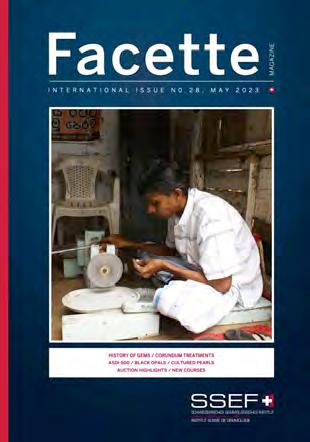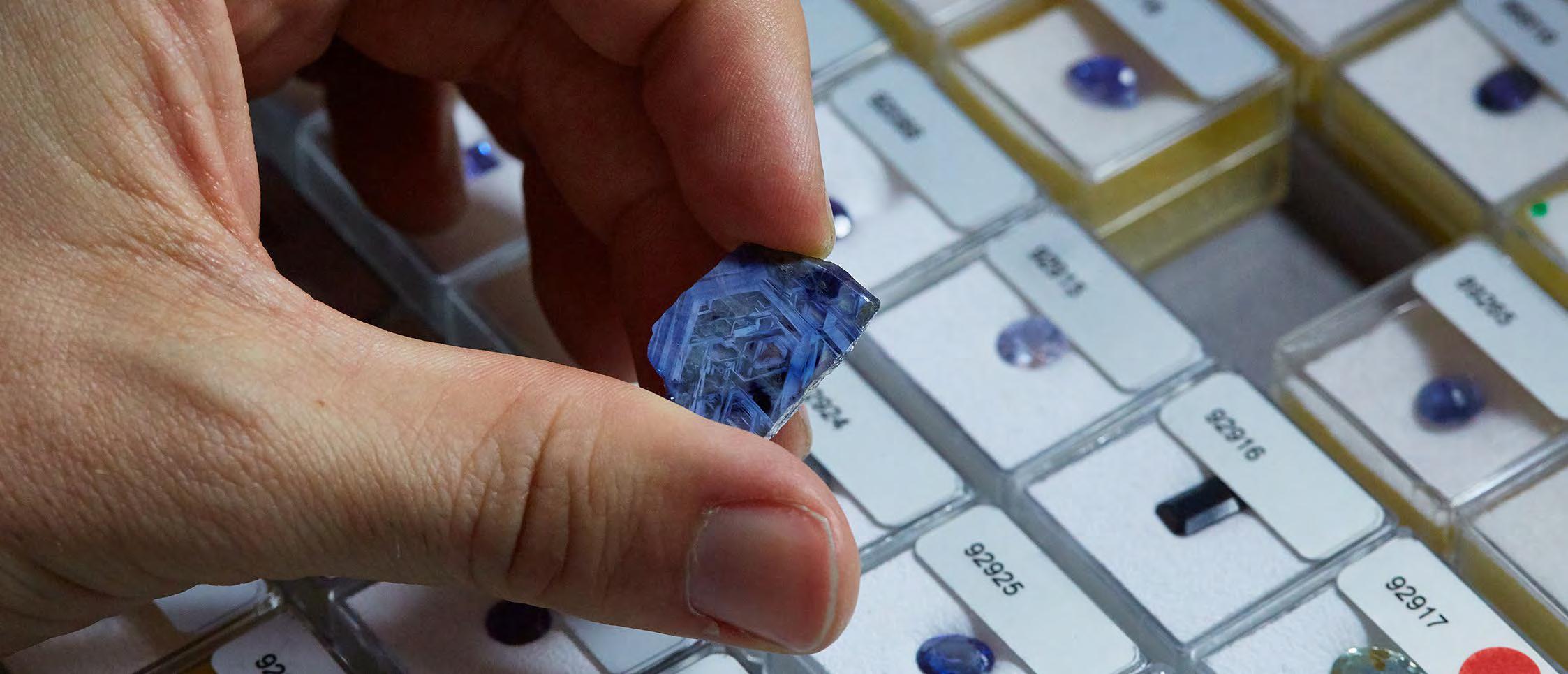
SGG Zentralkurs | June 2023
Presentation by PD Dr. Michael S. Krzemnicki

• Corundum: Colour centres, Irradiation treatment and low-Temperature treatment
• Paraiba tourmaline
• Spinel
• Garnet
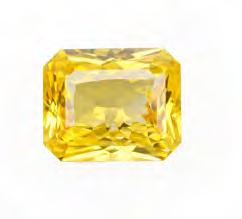
• Chrysoberyl & Alexandrite
• News
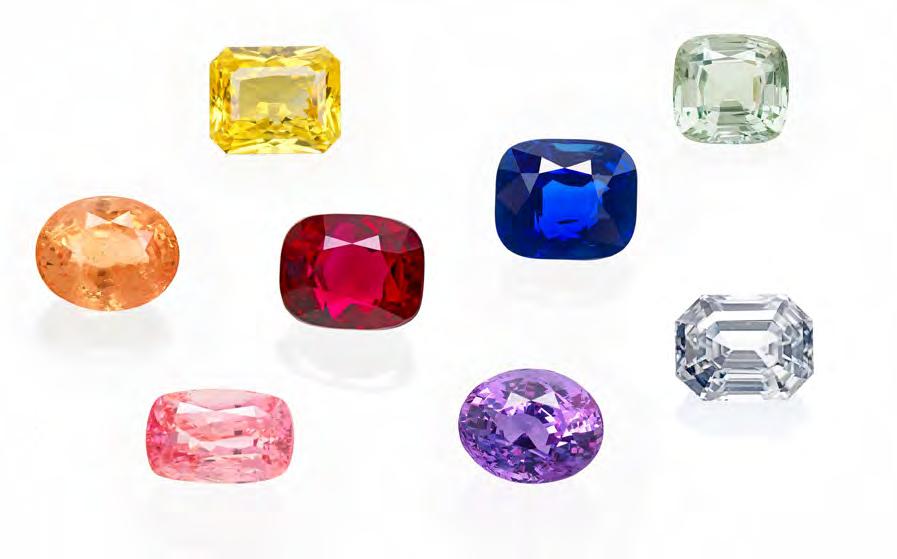
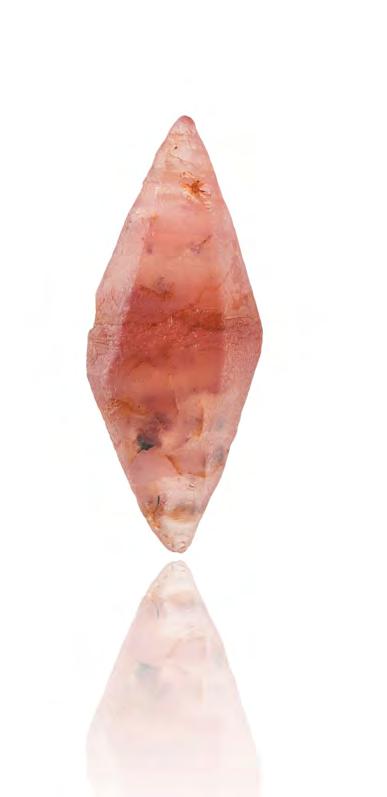



SGG Zentralkurs | June 2023
Presentation by PD Dr. Michael S. Krzemnicki

• Corundum: Colour centres, Irradiation treatment and low-Temperature treatment
• Paraiba tourmaline
• Spinel
• Garnet

• Chrysoberyl & Alexandrite
• News



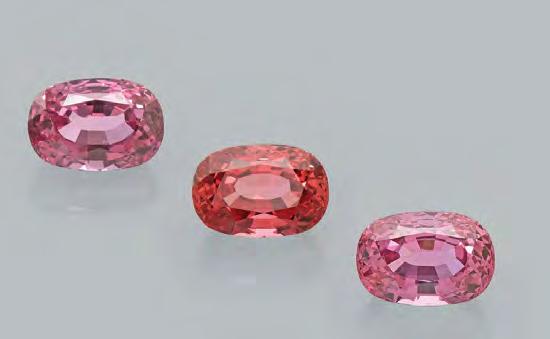
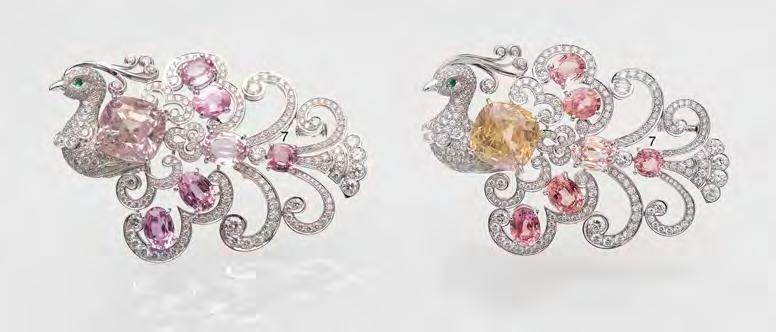
Stable colour
Unstable colour (colour centres activated)
Colour centres in corundum, specifically important for yellow, orange and padparadscha-like colours. Not all of these colour centres are stable. Thus the colour may shift over time, but also be activated by exposing the stone to an appropriate radiation.

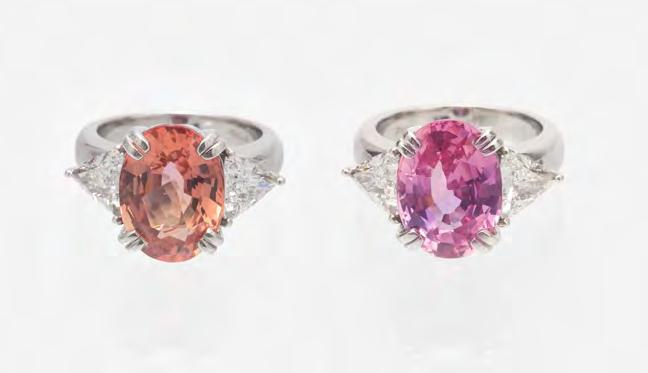
Since March 2022: New wording to describe this colour shifting!
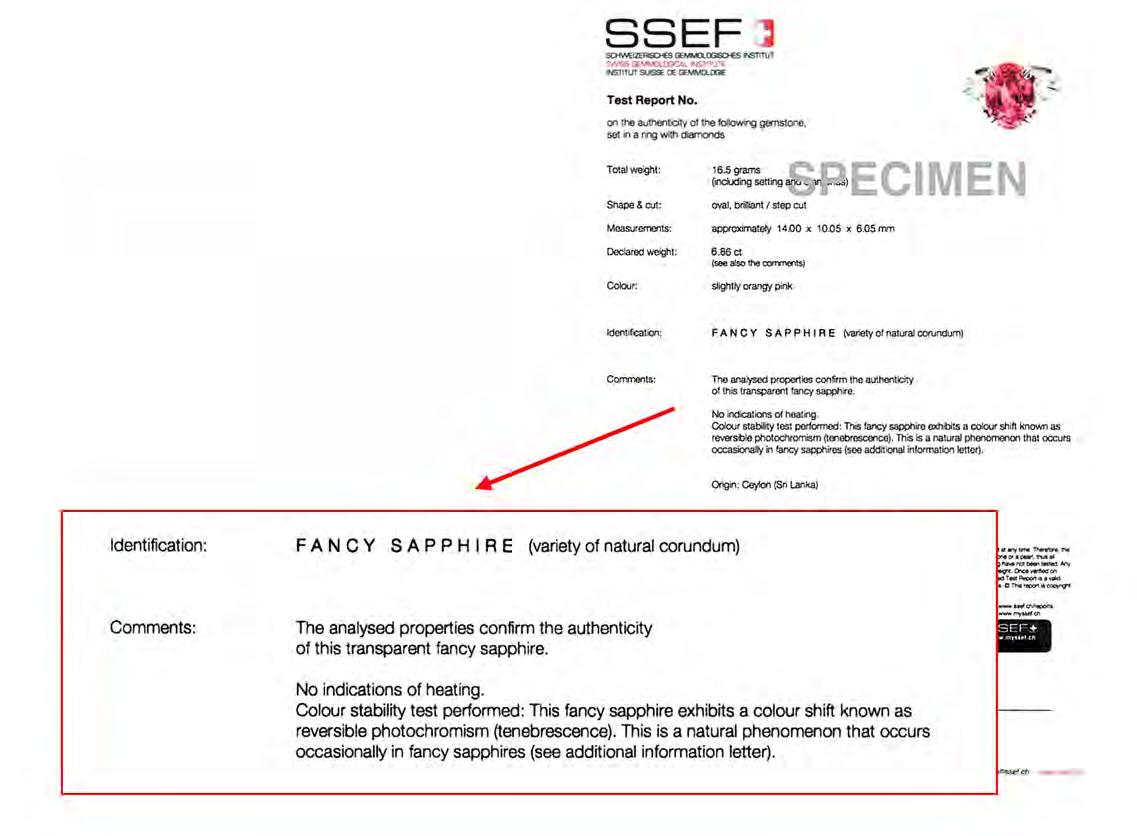


Since about two years, we have reliable information that rubies of purplish red tint (e.g. from Mozambique) and purplish-pink sapphires (e.g. from Madagascar) are treated by a small number of individuals using cancer radiotherapy equipment.
This irradiation treatment may induce and/or activate colour centres in corundum that result in a shift to a more attractive red or pink hue.
Usually, the colour is not fully stable, thus shifting back at least partially or fully after irradiation.

Since many years, the SSEF tests the colour stability of yellow, orange and padparadscha coloured corundum.
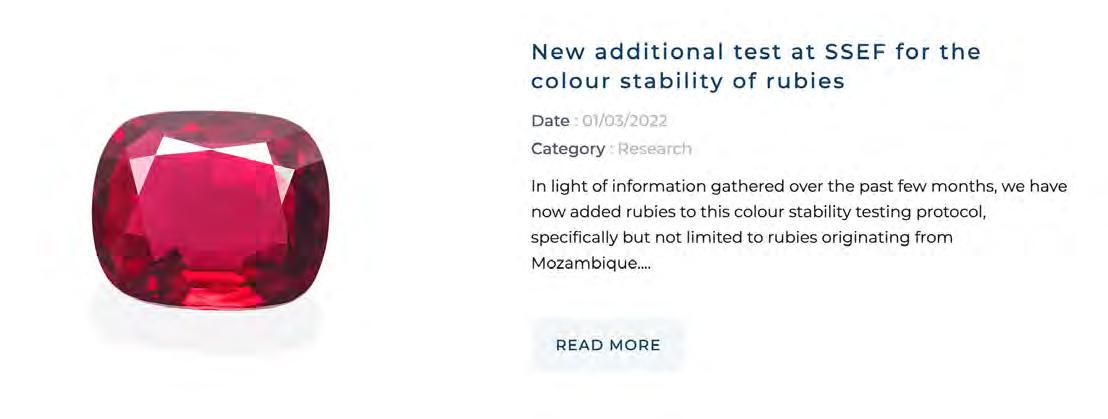
see: www.ssef.ch/news
In March 2022, we informed our clients about this new treatment and that we expanded the colour stability testing to certain rubies.
To better understand this treatment and to find criteria for detection, we started a research project including irradiation experiments using a linear accelerator in Switzerland.


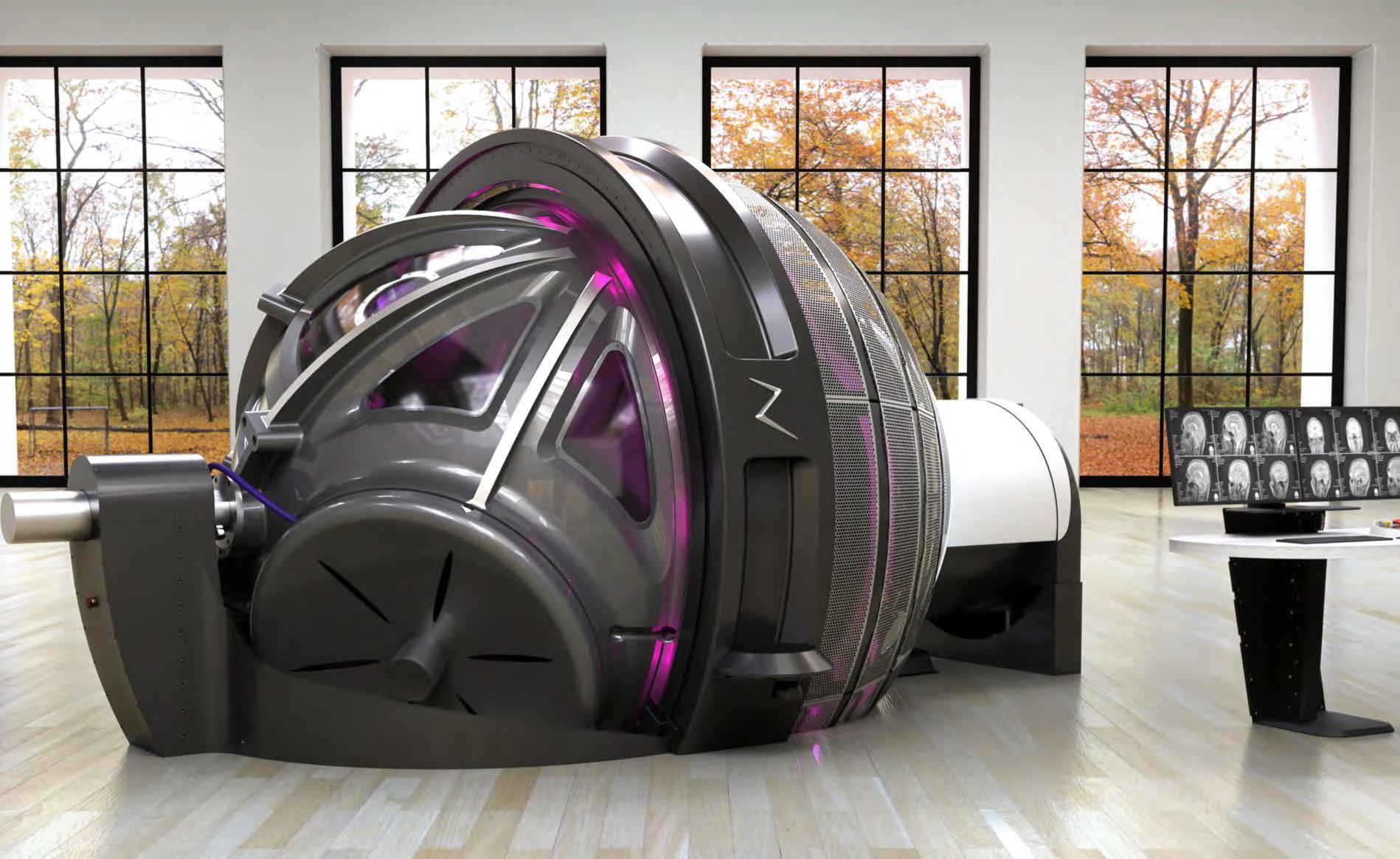

We collaborate for this with a specialised Swiss institution (SNRC).
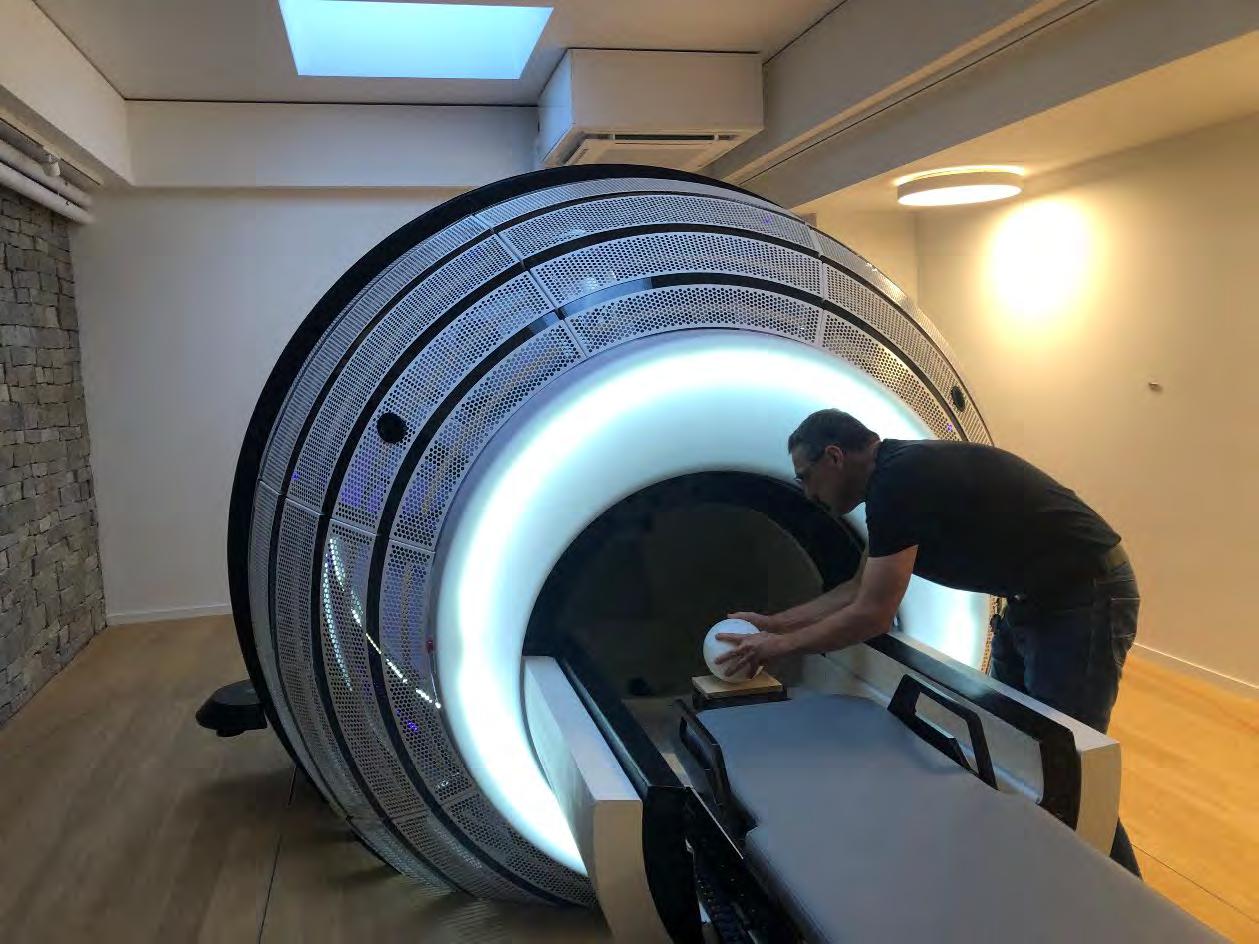
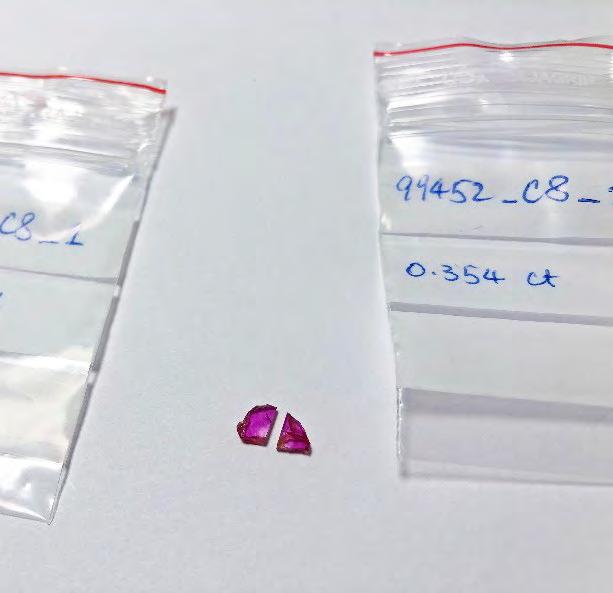

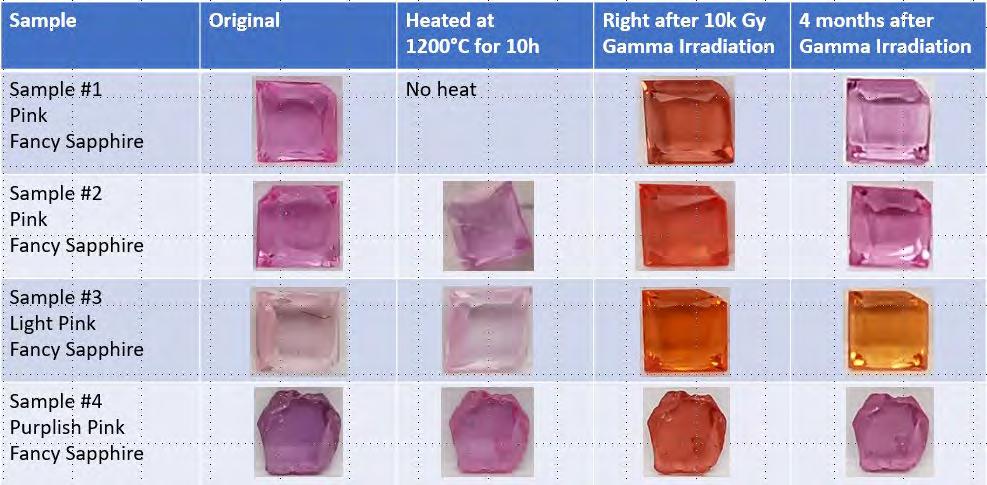

Distinct colour change after irradiation in pink to purple sapphires, most were not stable.
But no colour shift in all our Mozambique rubies of saturated red colour after irradiation (in accordance with findings of other labs).


• Irradiation treatment of corundum is known since many decades.
• So far, no scientific method to positively detect this treatment. Several gem labs (incl. LMHC) do research on this topic.
• To avoid colour shifting issues, most gem labs expand colour stability testing to include rubies, specifically if they show an orangey-red hue.
• SSEF colour stability testing on many hundred Mozambique rubies: We never observed a ruby with colour instability.
• Although not a proof, that such a ruby was not irradiated, it confirms at least that its colour is stable !
• All saturated red rubies irradiated by SSEF and other labs did not show any noticeable colour shift. We assume that this irradiation treatment is mostly successful for purplish red to purplish pink corundum of medium to low saturation.

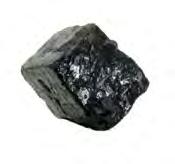
Thorianite (ThO2) or other radioactive inclusion near the surface may result in a (small) chipping damage as a consequence of the decay of U to Pb over (geological) time periods.
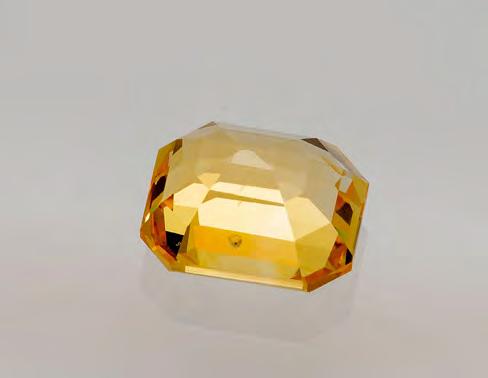

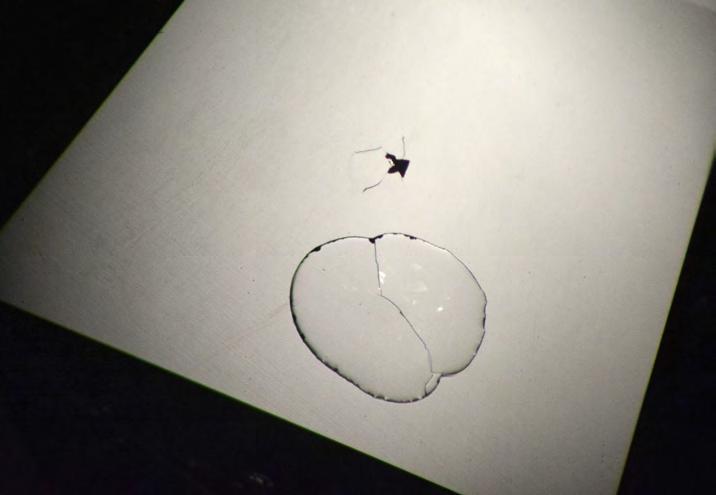
chipping occurred
Not yet, but soon !

Heating of corundum:
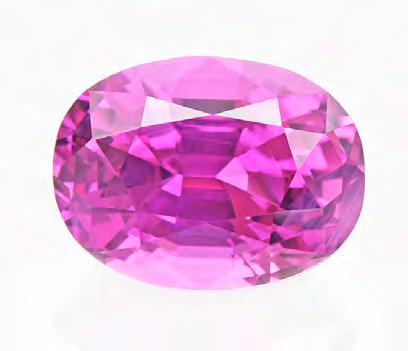
• Traditionally at about 1200-1400 °C to enhance colour significantly.
Inclusions (e.g. rutile needles, zircon) are mostly transformed.
• At higher temperatures (>1500 °C) commonly for diffusion treatment or artificially healing of fissures using a (borax) flux.
• At about 700 - 1000 °C (referred to as low-T heating in the trade).
Inclusions may remain intact and usually only minor colour enhancement of the stone.

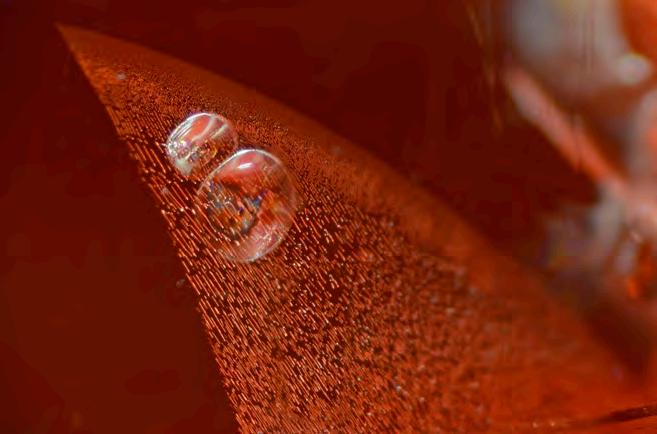
Characteristic atoll-structure
50x magnification, easy to see
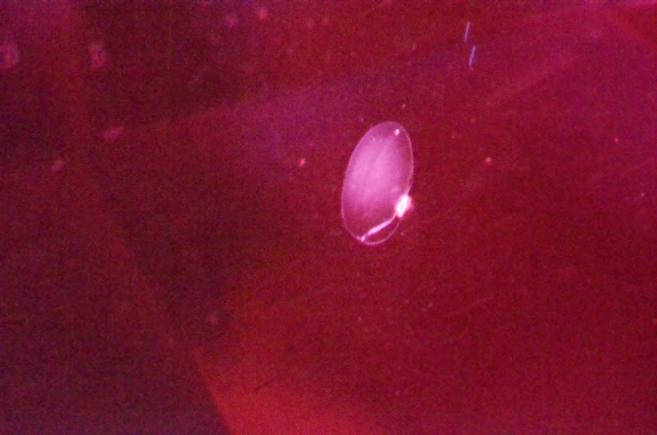
Characteristic atoll-structure
70x magnification, difficult to see
Such evident features for heating are rarely seen in corundum heated at low temperatures.


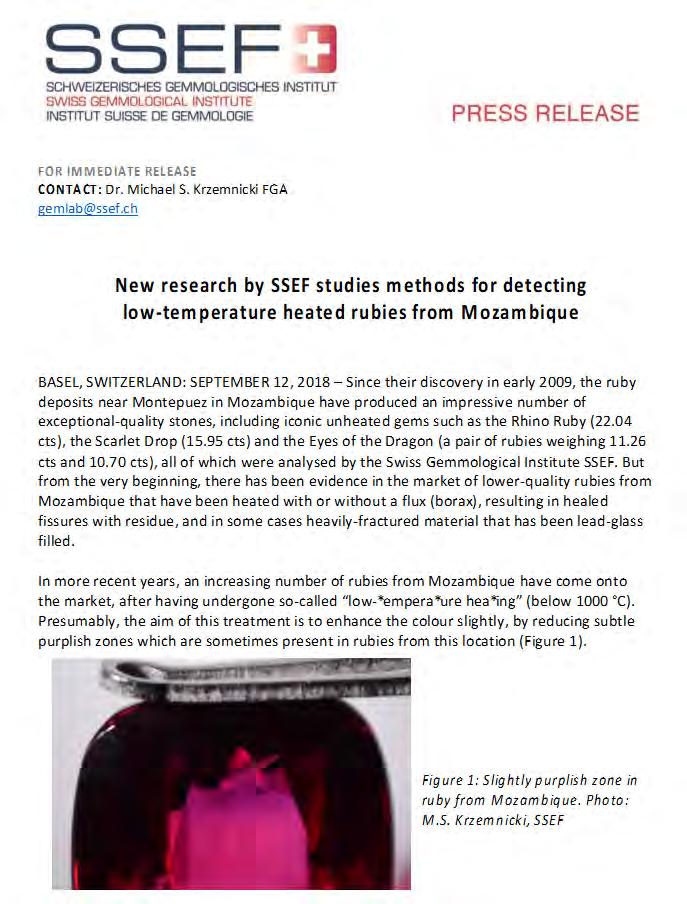
SSEF Press Release Sept 2018
See https://www.ssef.ch/press-releases/

Samples from Gemfields (heated by Gemfields) and the Bangkok trade.
Simple OH-series (only 2 peaks)
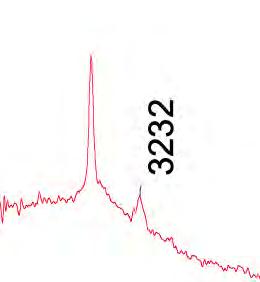
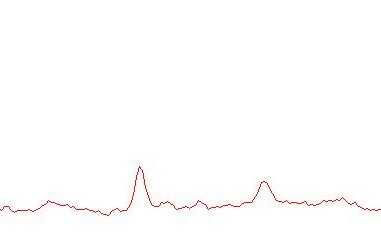
Complex OH-series (3 or more peaks)

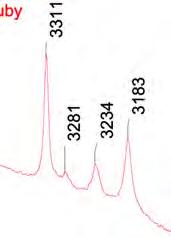
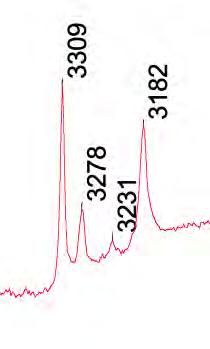

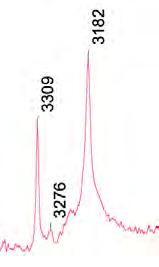

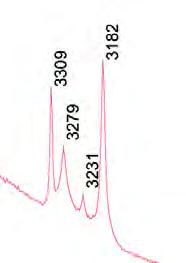
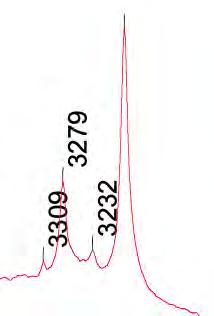
Zircon inclusions may provide important information about heat treatment (and origin) of corundum. υ3
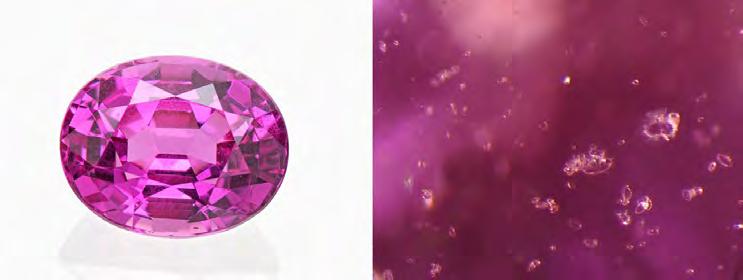
“Hot”pinksapphirefrom Ilakaka(Madagascar)andsmall zirconinclusionsinsuchapinksapphire.
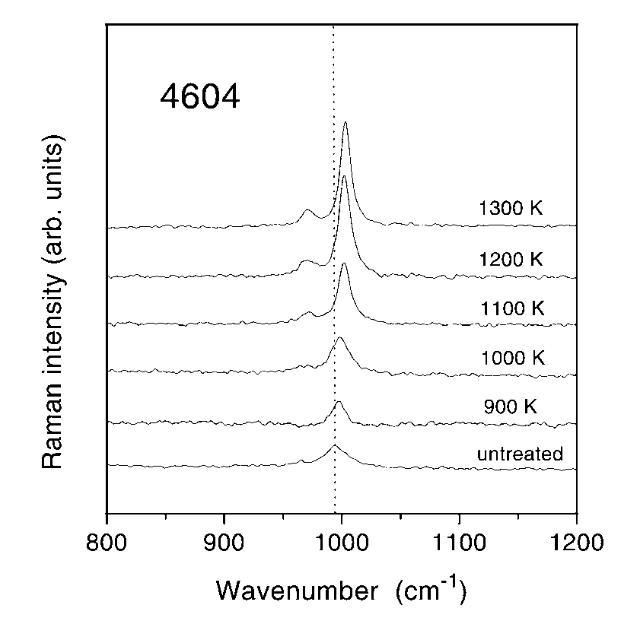
Zhang et al. 2000


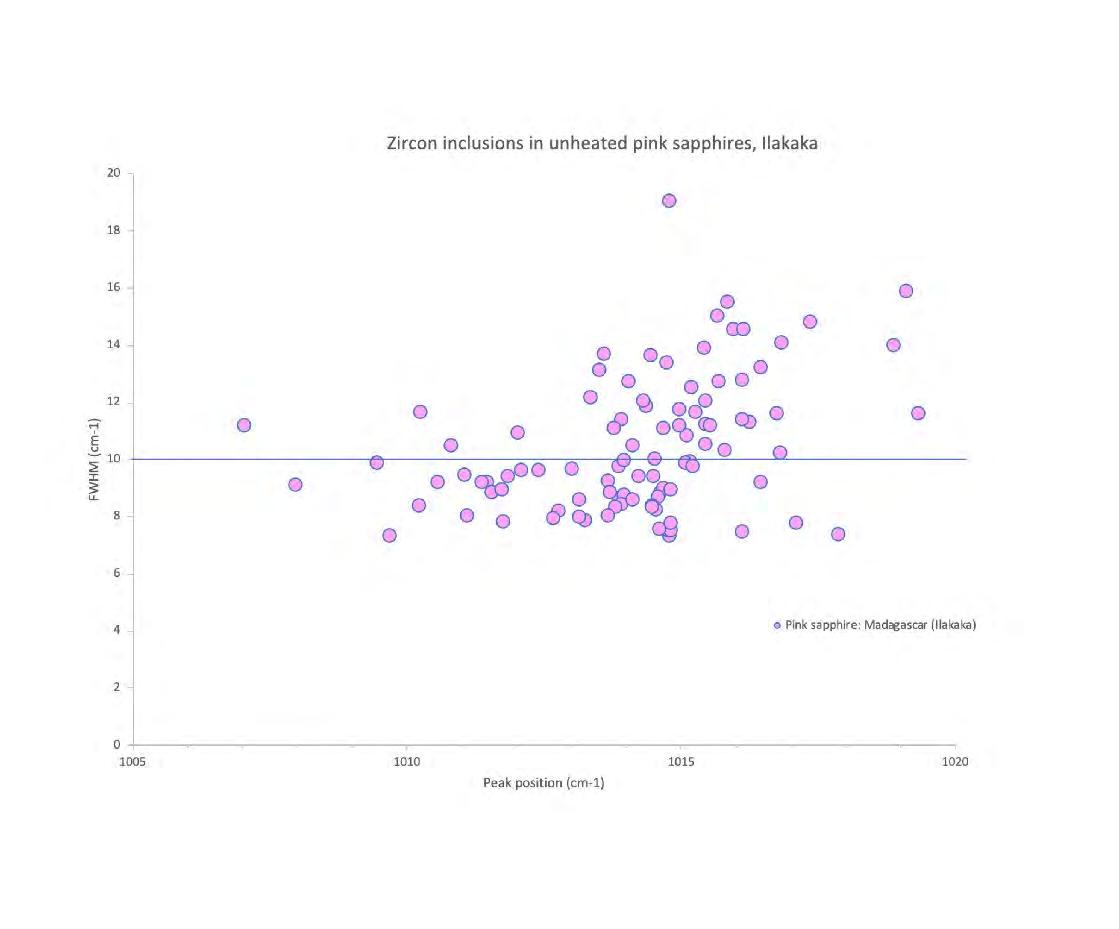
υ3 versus FWHM(υ3) scatterplot
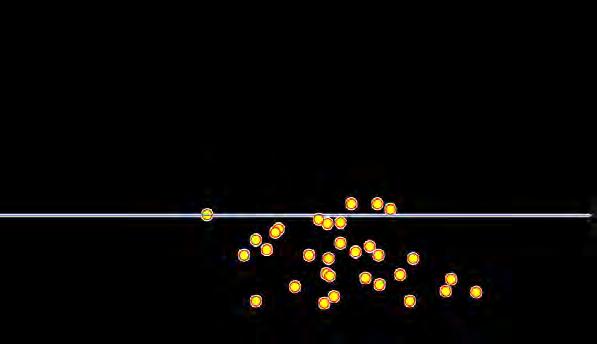

Large overlap of unheated and heated pink sapphires from Ilakaka (Madagascar). Yellow spots: heated Pink spots: unheated
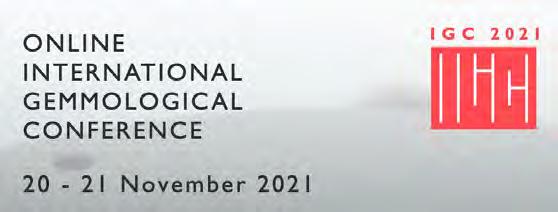
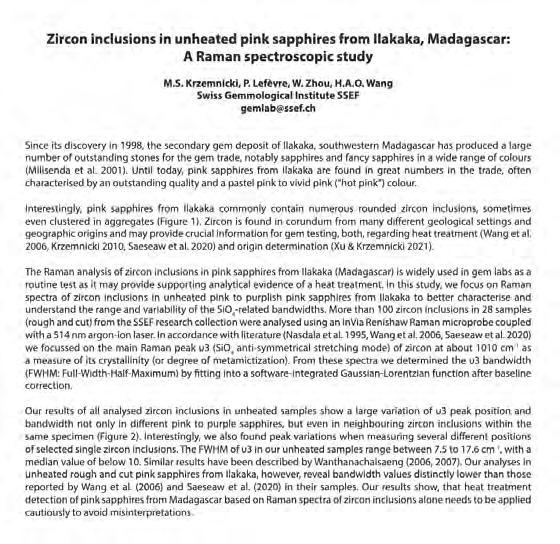

Heating experiment (1000 °C) of pink sapphire, Madagascar with numerous zircon inclusions.
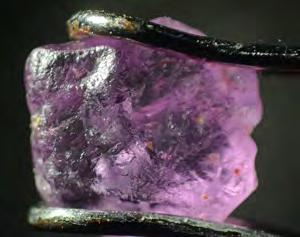
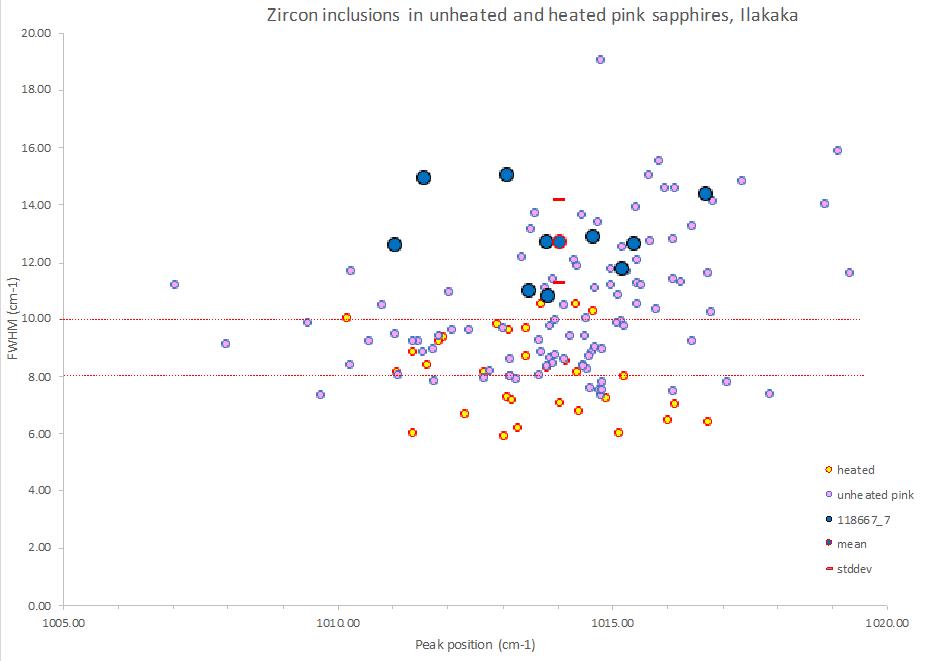
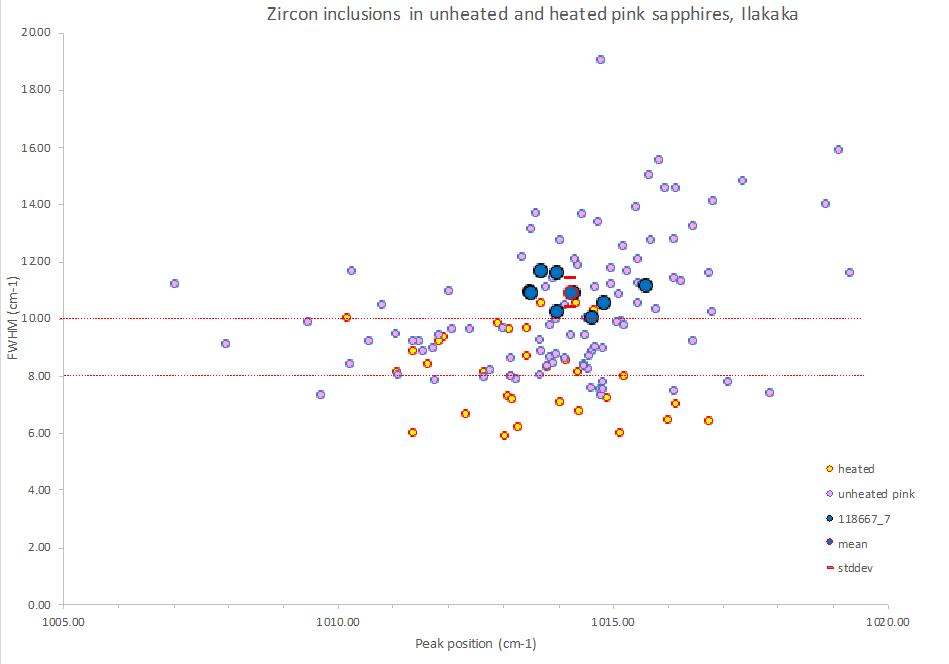
FWHM of zircons before FWHM of zircons after heating

Goethite (Fe-hydroxide), diaspore (Al-hydroxide), and other inclusion minerals as important markers for unheated corundum!
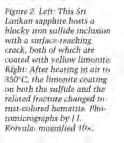
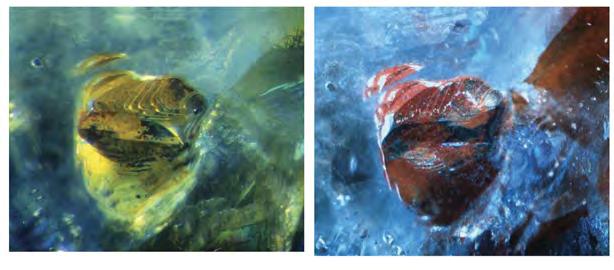
from Koivula 2013 unheated heated
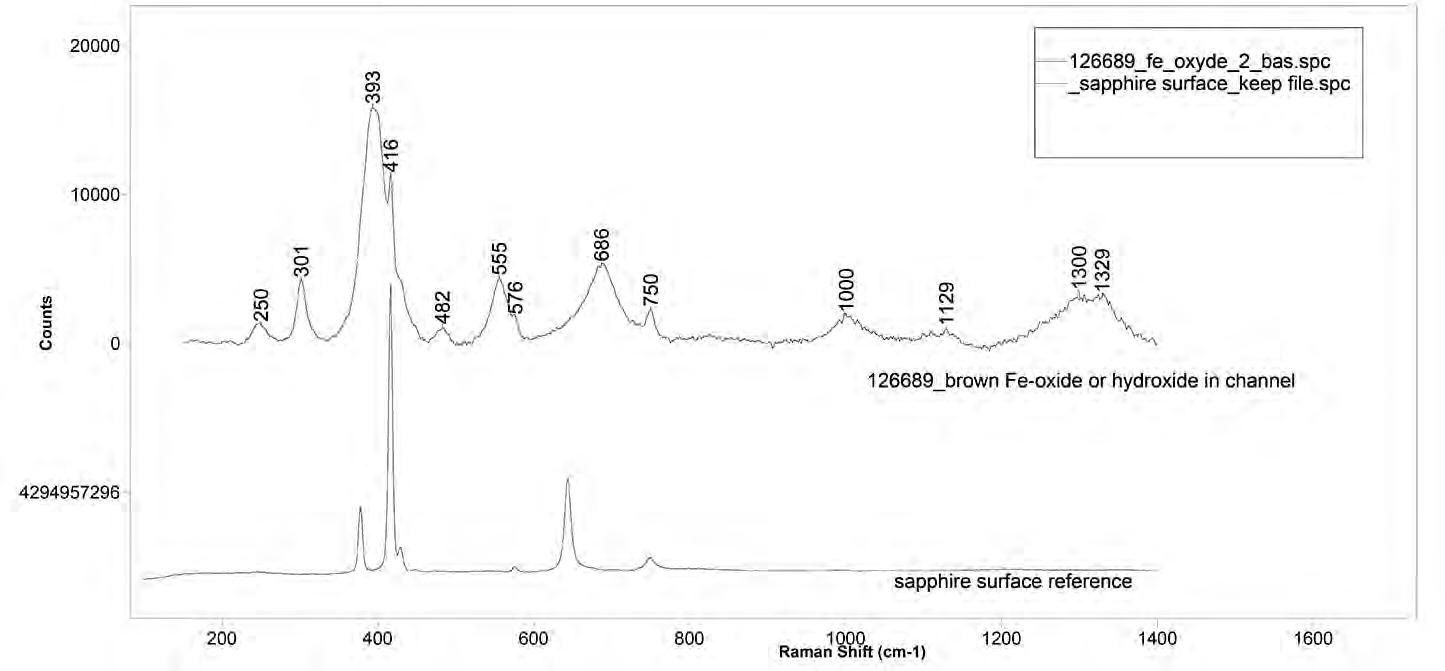

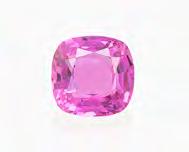
Goethite (Fe-hydroxide), diaspore (Al-hydroxide), and other inclusion minerals as important markers for unheated corundum!
SSEF Newsletter March 2023
https://www.ssef.ch/ssef-news/
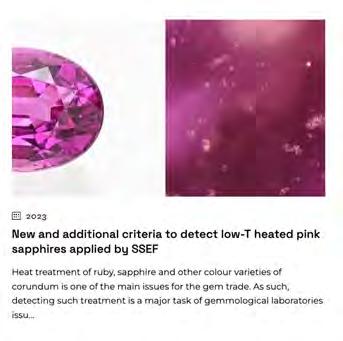
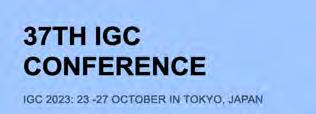
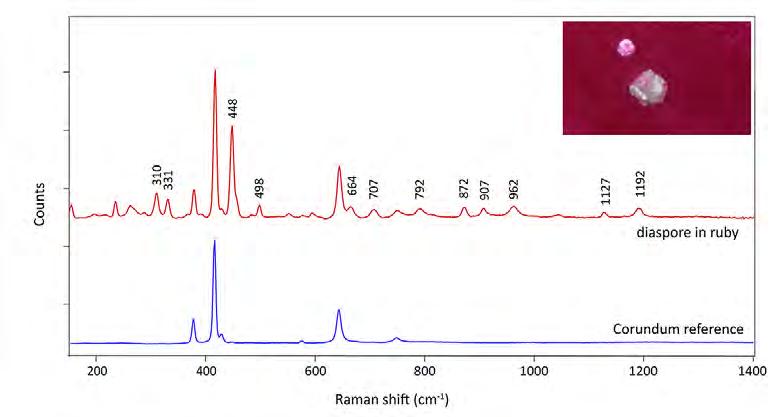



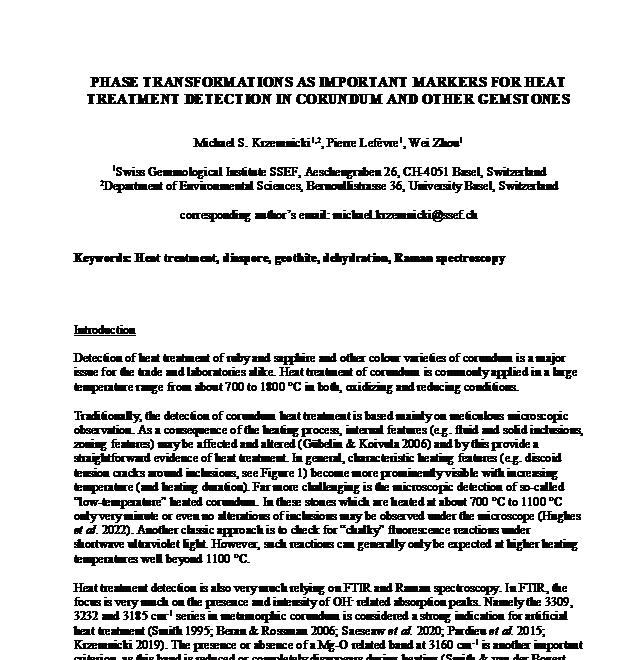
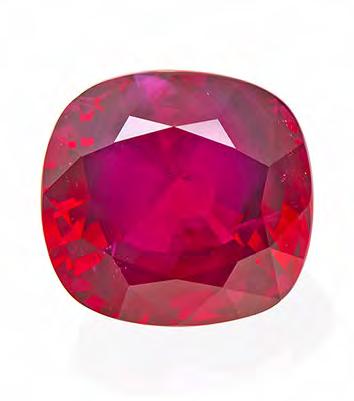
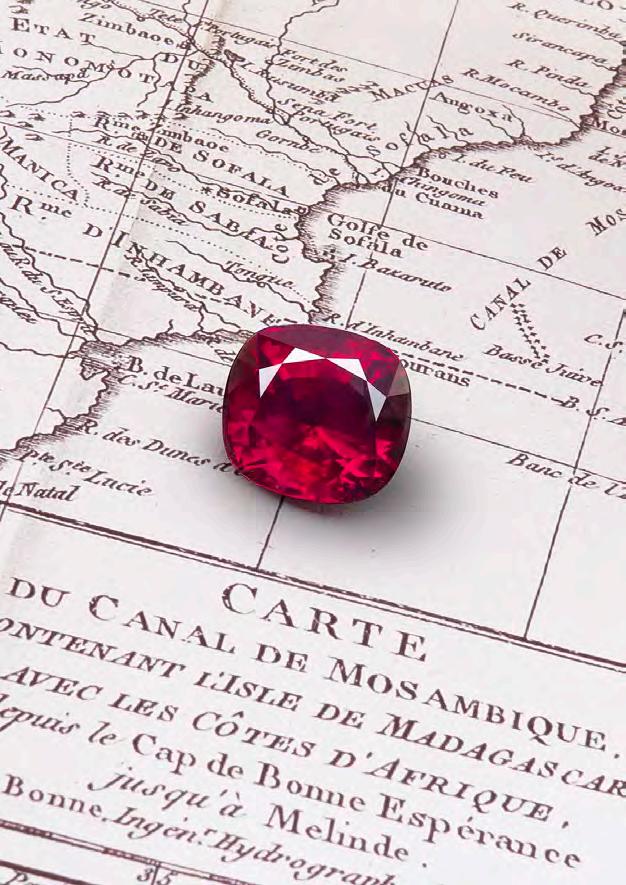
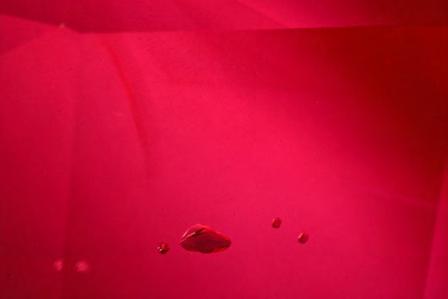
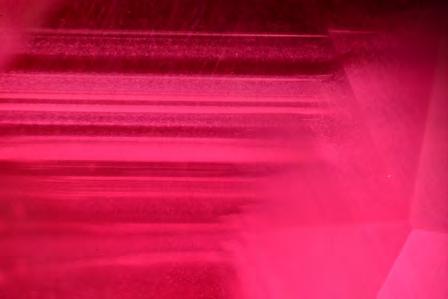
USD 34.8 million at Sotheby’s Auction, 8th of June, in New York.
New World Record for a ruby and any coloured gemstone at auction so far.



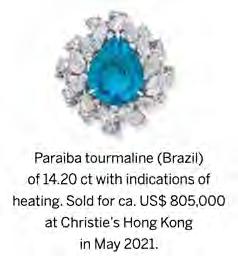
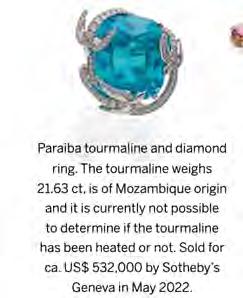
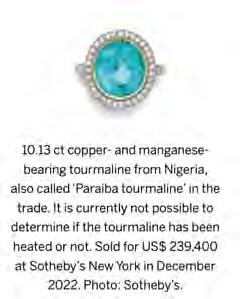
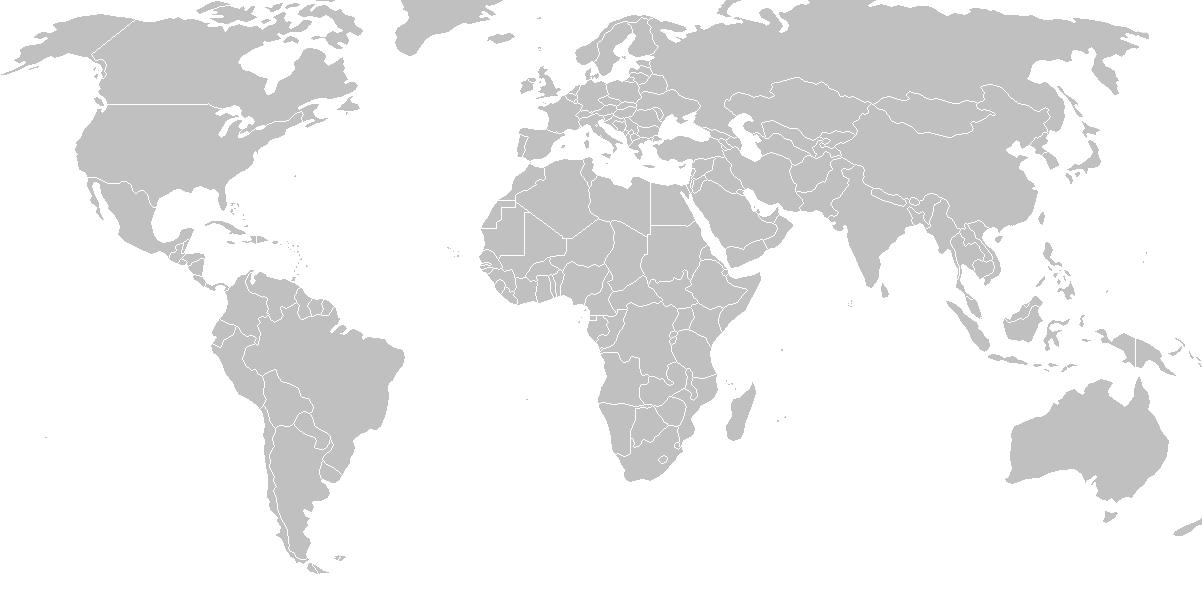




Map © Wikicommons

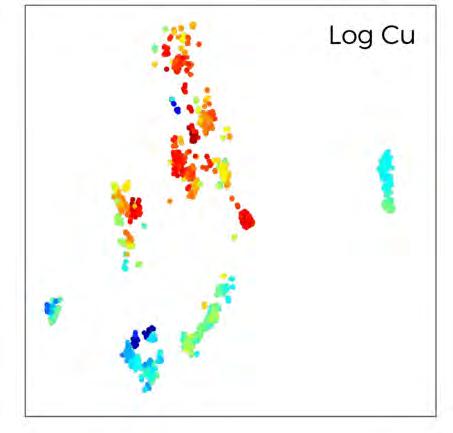
Data visualisation at SSEF using machine learning algorithm (non-linear unsupervised tSNE).
Mozambique, Maraca
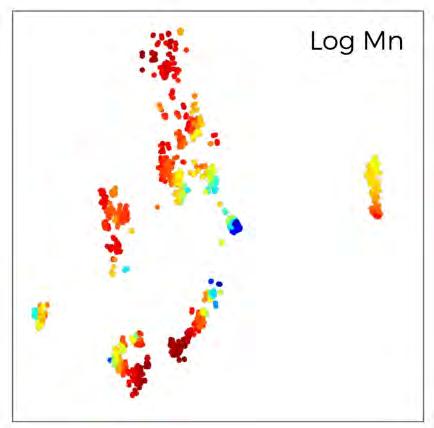
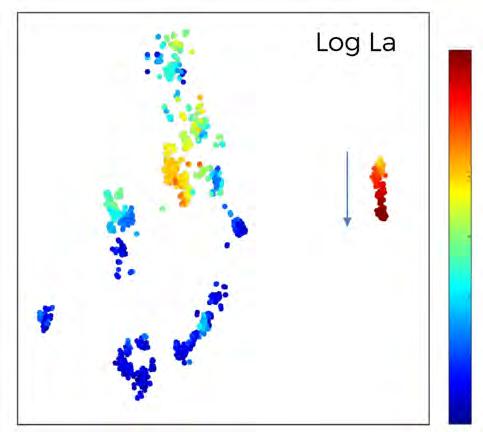

| Paraiba tourmaline or not?
Mozambique tourmaline containing low amount of copper.
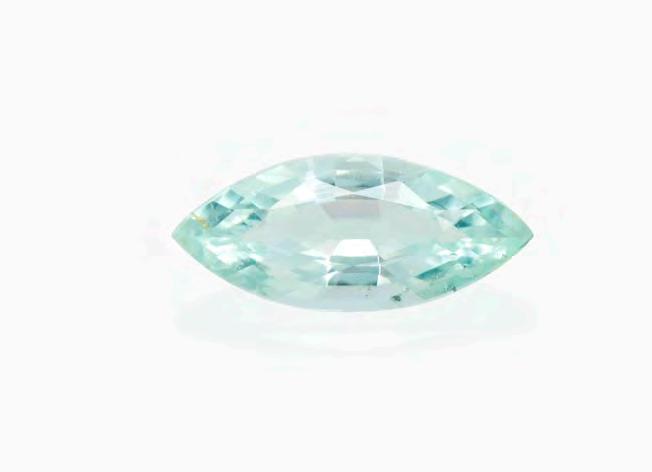
log Cu (ppm)
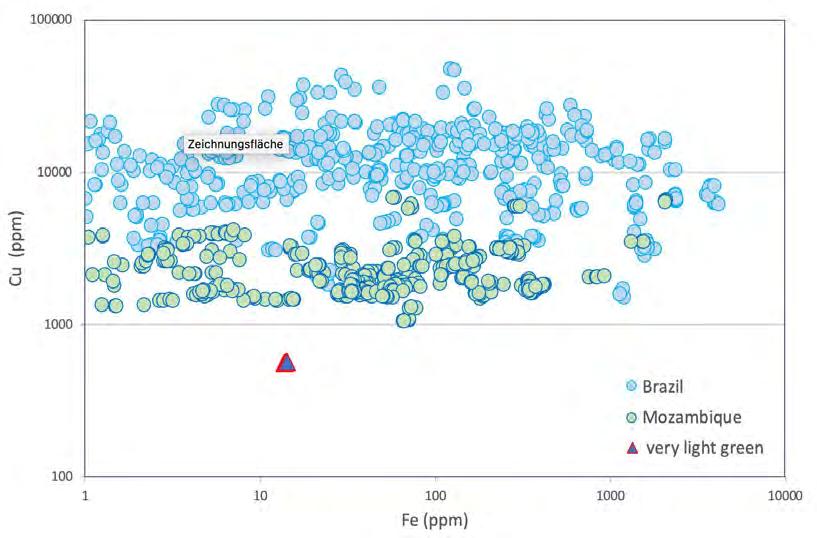
Not considered Paraiba tourmaline!
See also updated LMHC information sheet No. 6: https://www.lmhc-gemmology.org/gemstones

Pair of tourmalines from same client tested recently at SSEF.
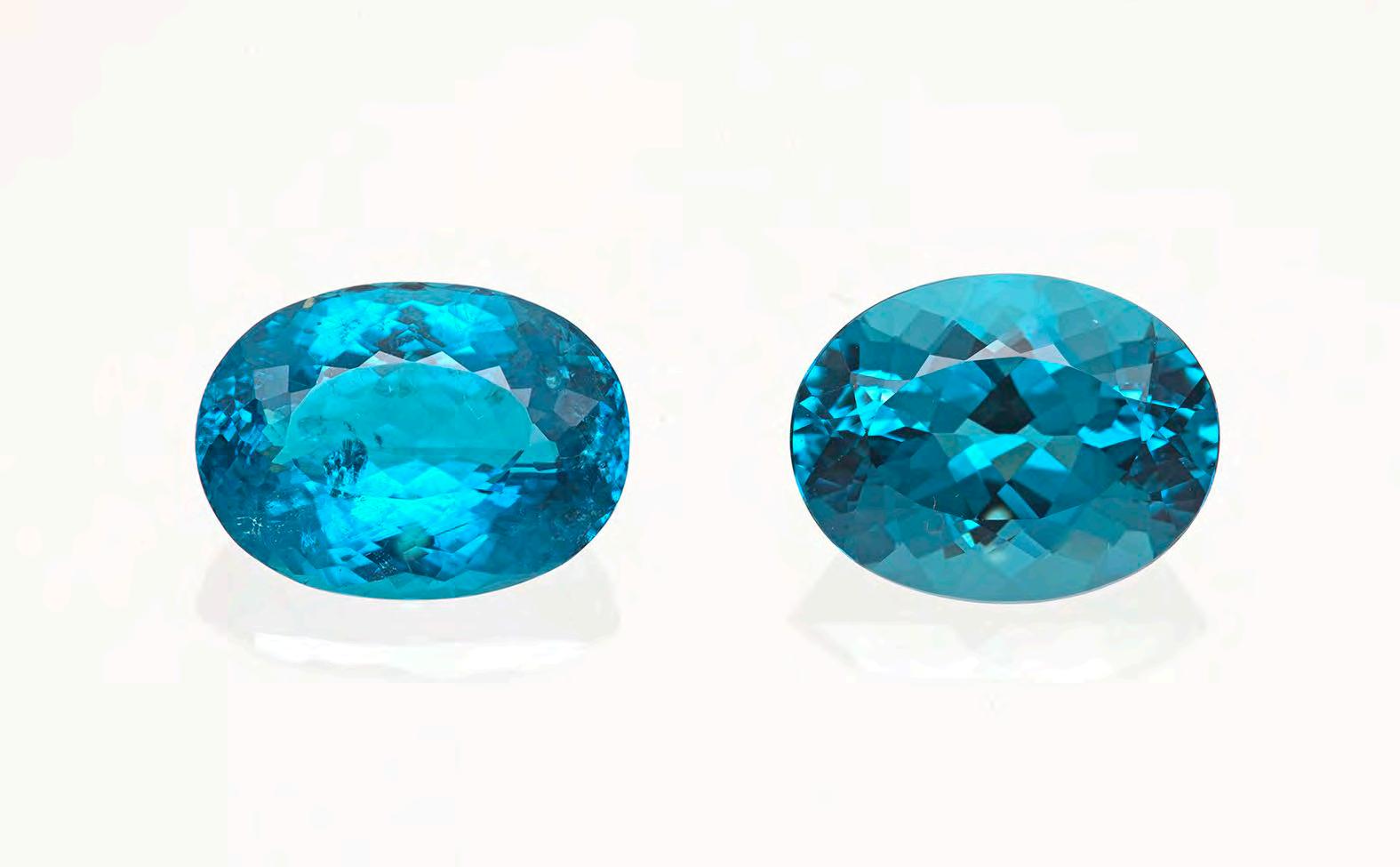

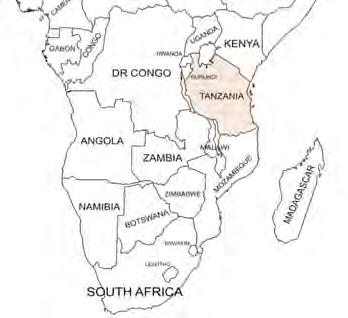
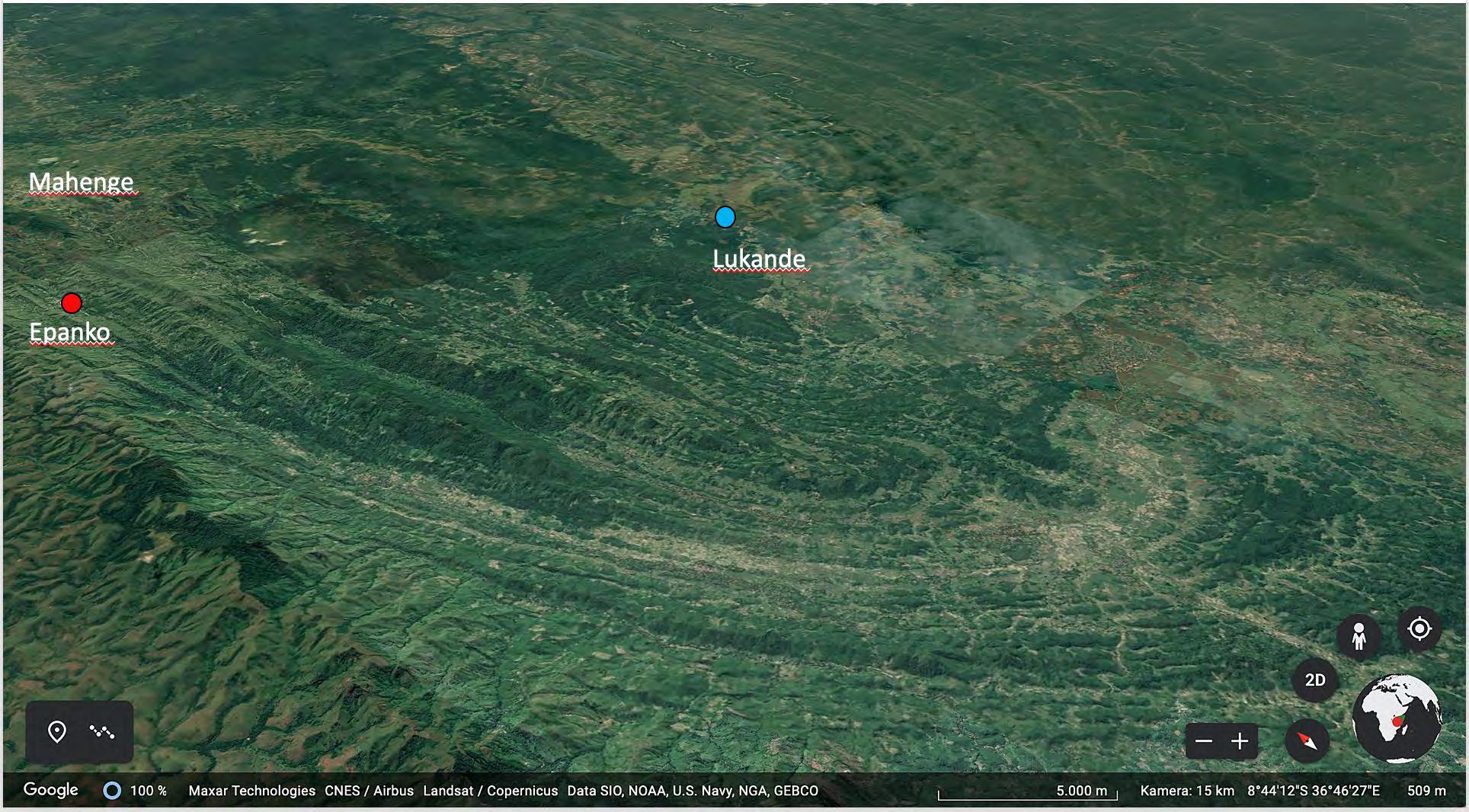

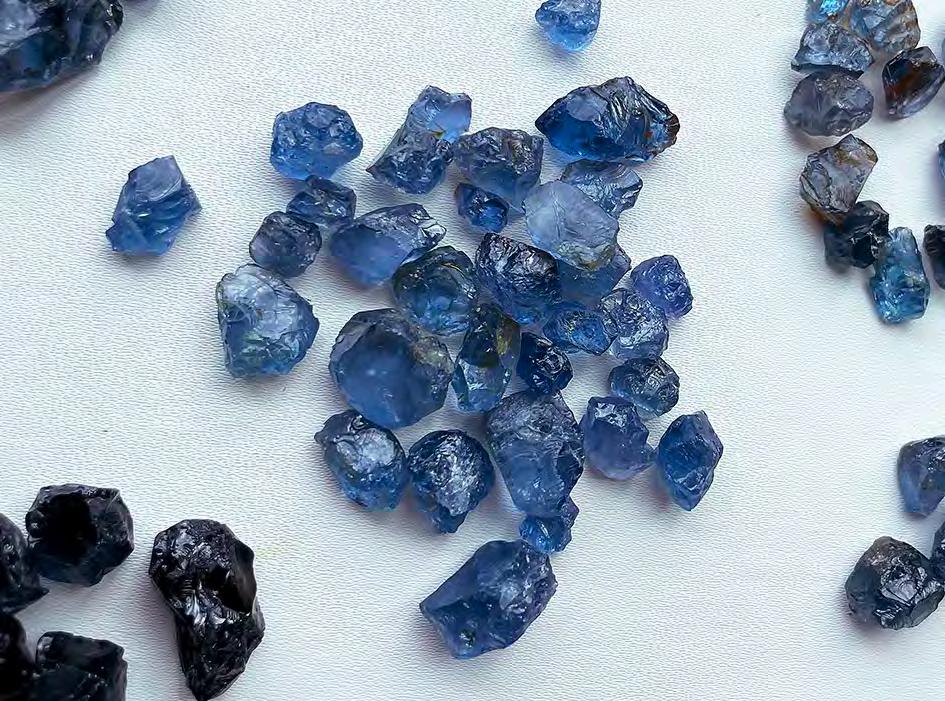
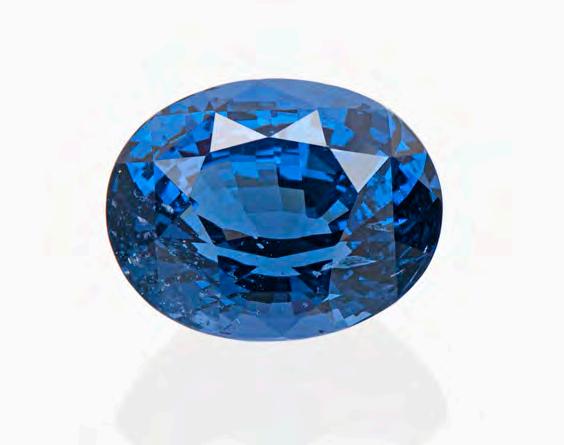
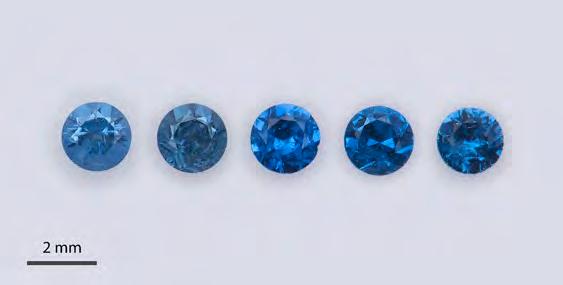

Not all blue spinel from this new source is Co-spinel !
Absorption spectra

Iridescent lamellar högbomite
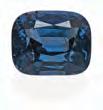
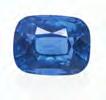


Trace element comparison of Co-spinel type I vs type II from Lukande
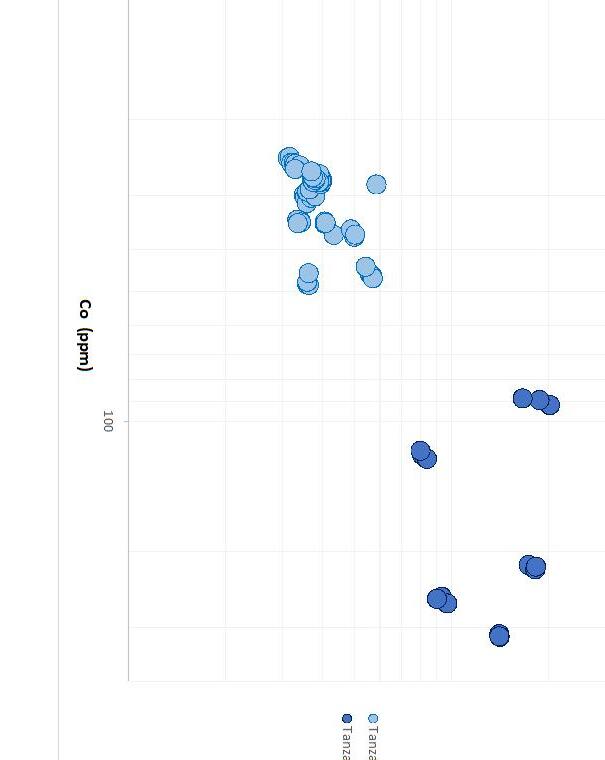
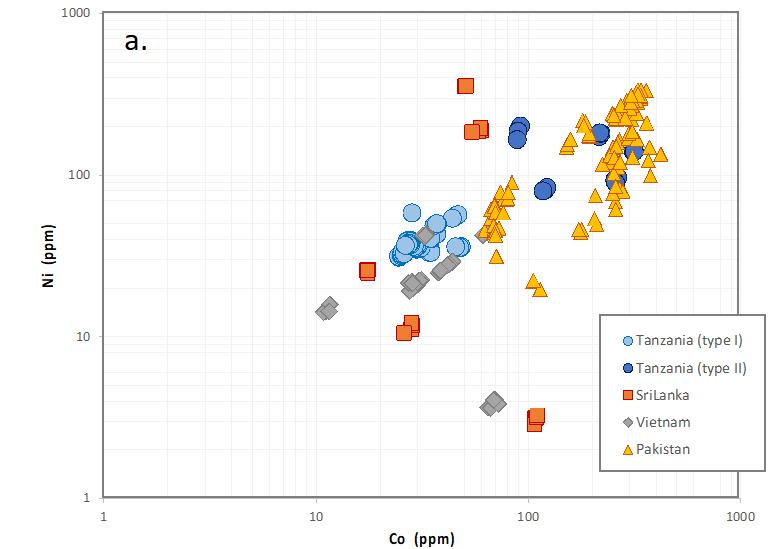
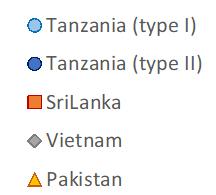
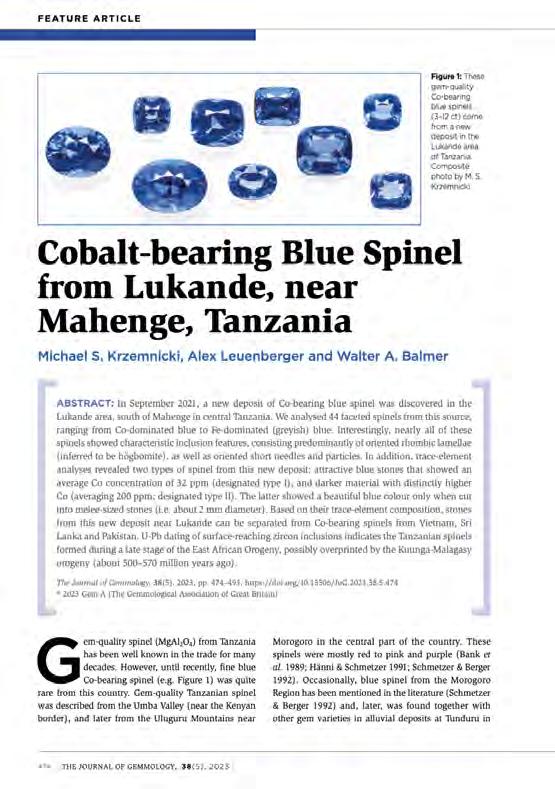

New production of pinkish red spinel from the “classical” deposit in Epangko, near Mahenge (Morogoro region, Tanzania.
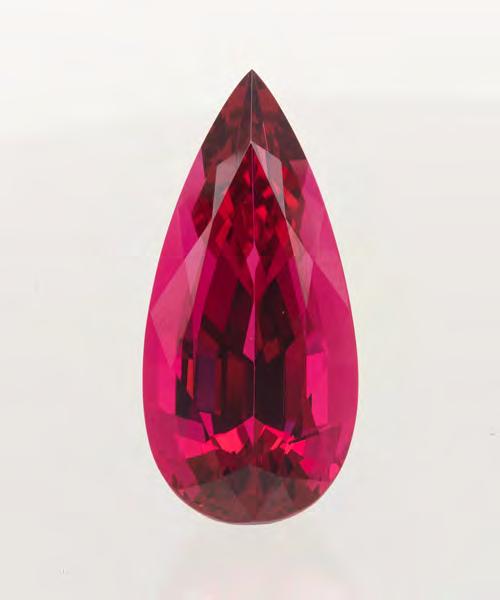

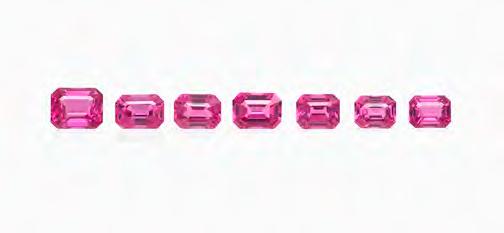

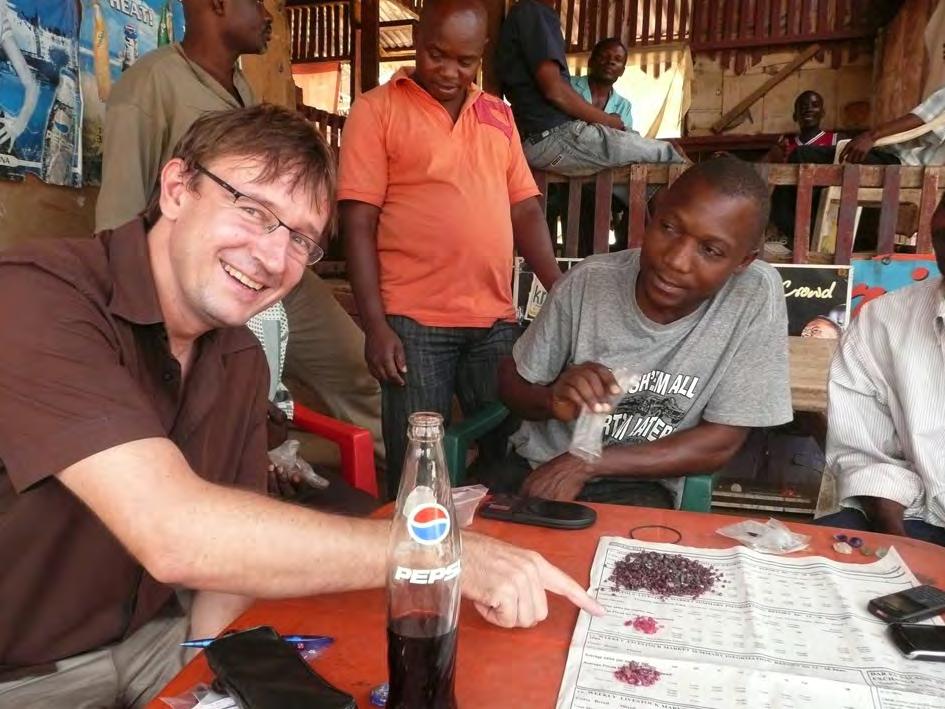

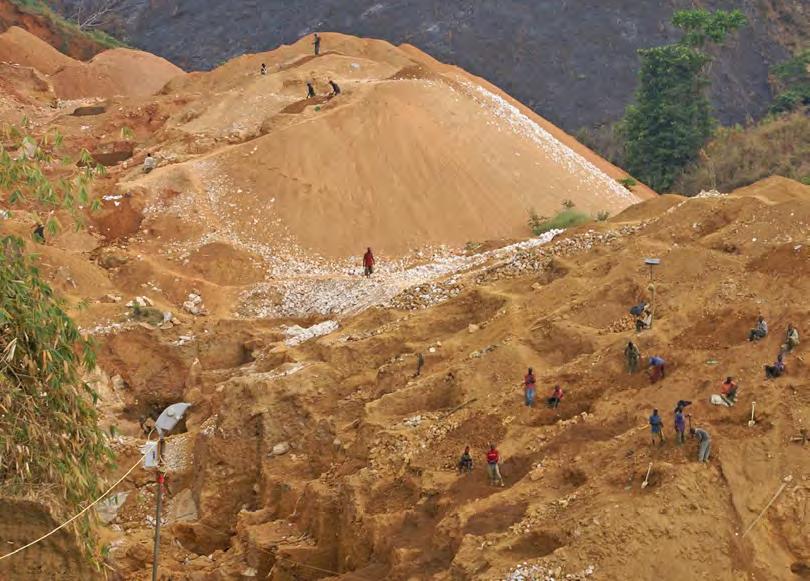
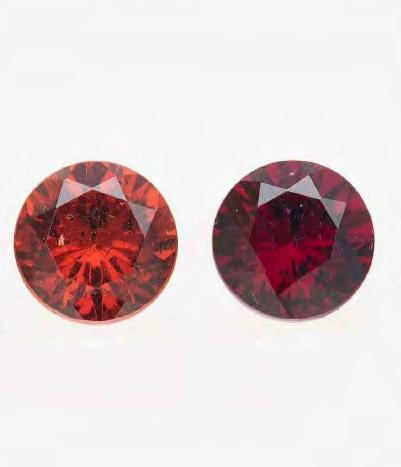
Pyrope garnets from Navajo Indian Reservation, New Mexcio USA.
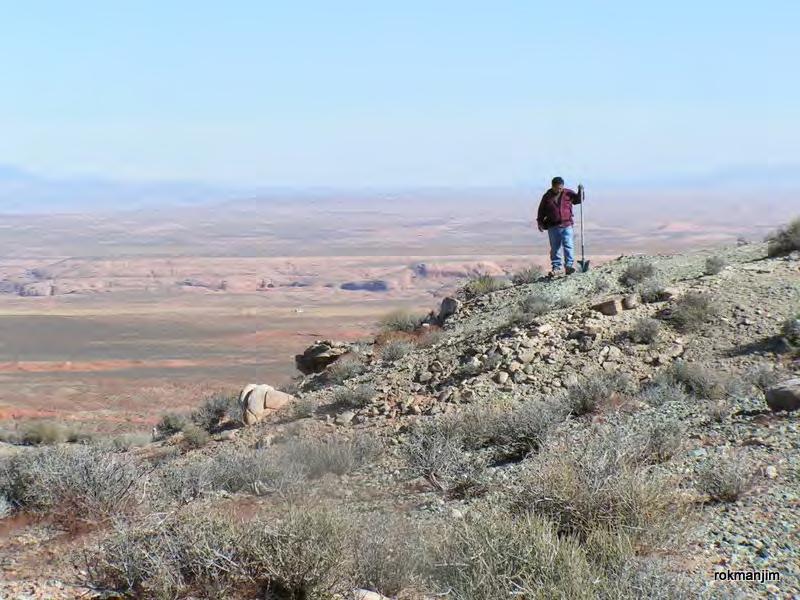
rough stones brought to surface by ants digging in the soil, hence their name.


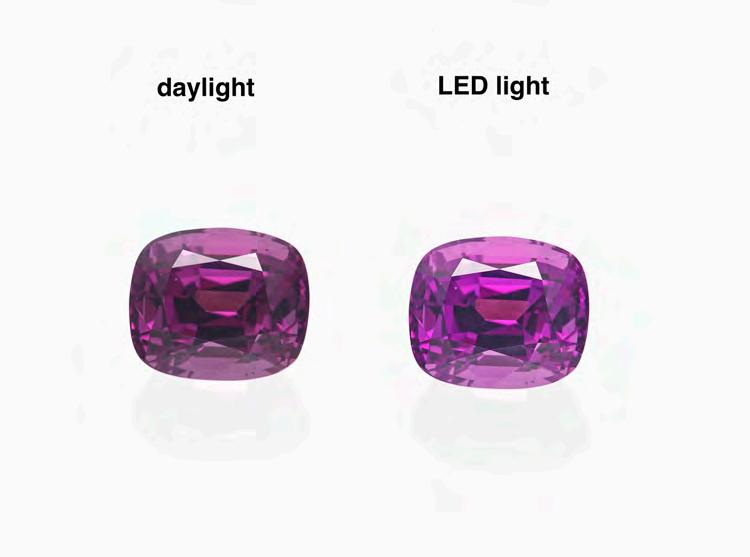
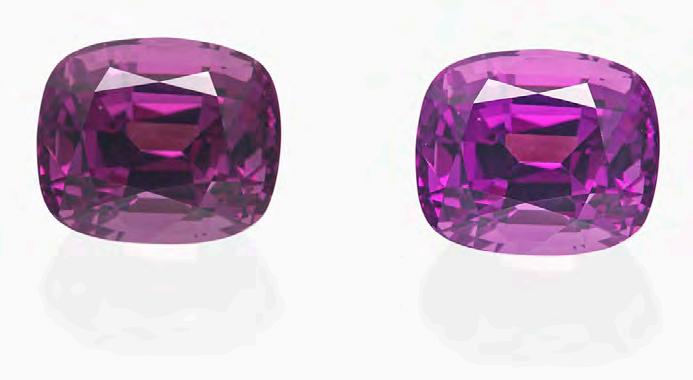

Garnets from Tanzania with slight colour shift
Pyrope with distinct spessartine and low almandine component. Fe2+ Mn2+

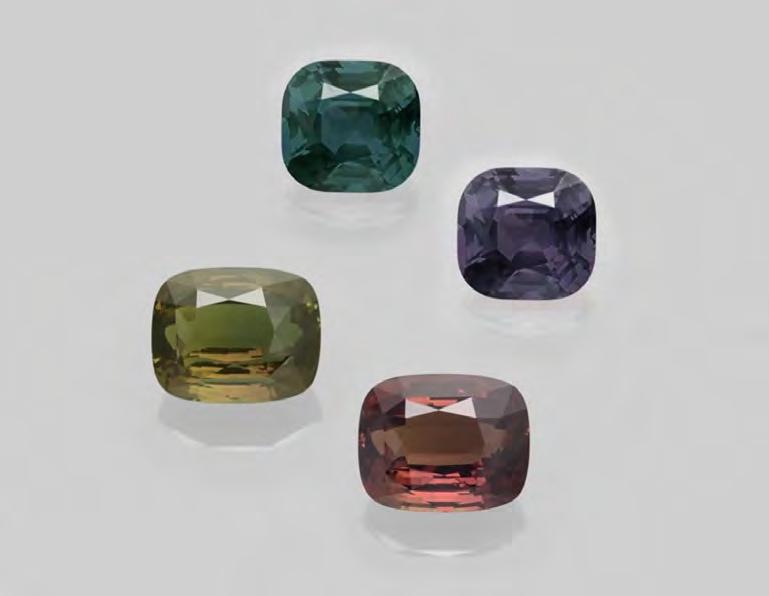


Usambaraeffect: V-bearing colour change garnets from Tanzania.
Vanadium-bearing garnets of the pyrope-spessartine series may show a colour change and additionally an interesting Usambara effect.

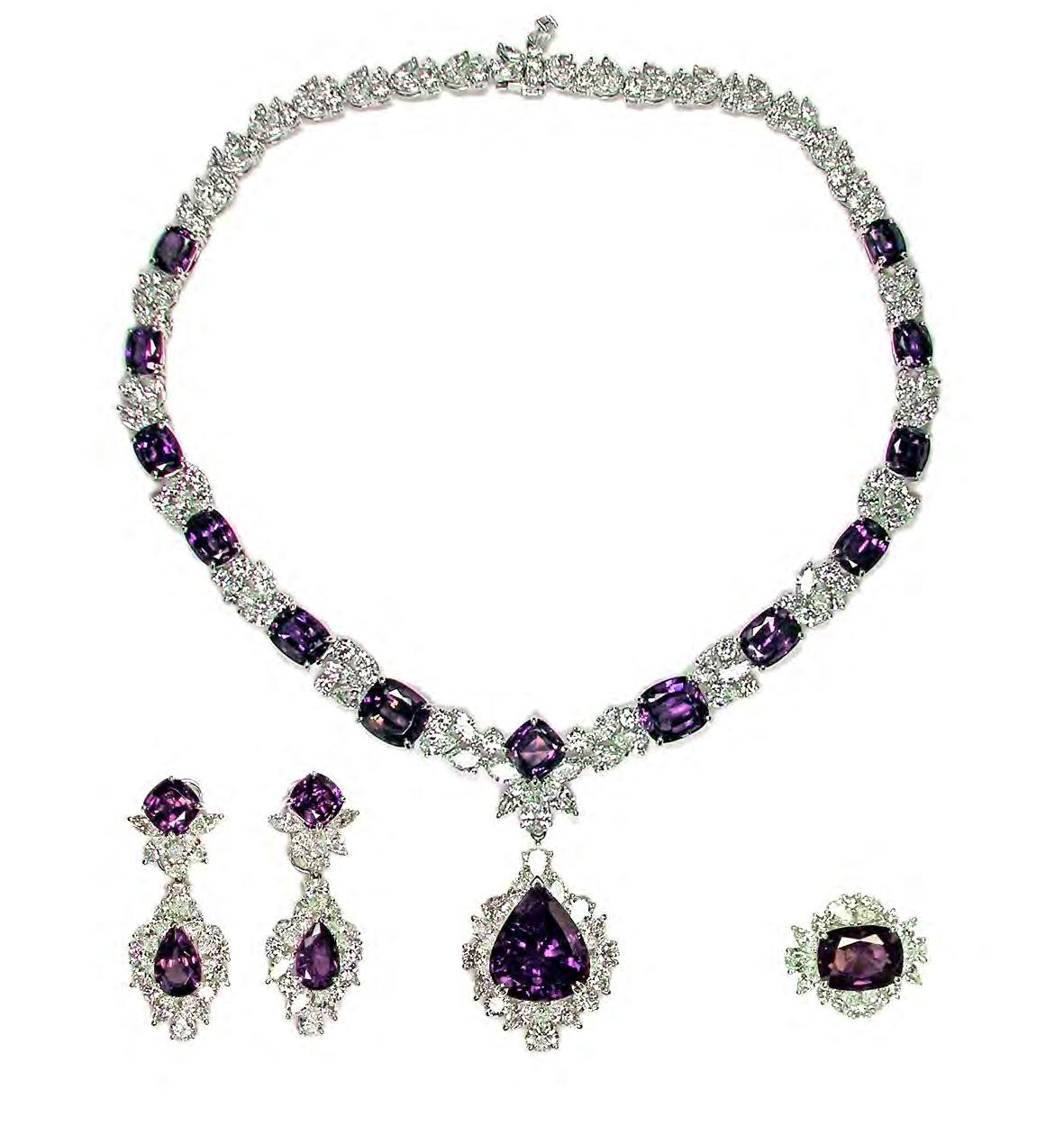

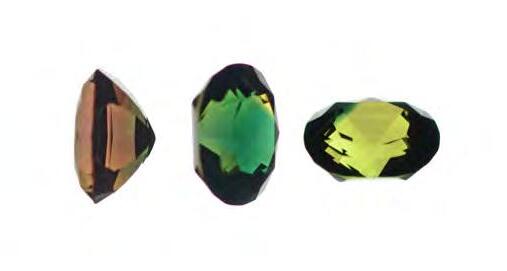
Alexandrite shows distinct pleochroism
Alexandrite (LMHC) definition: A chromium-bearing variety of chrysoberyl showing a colourchange in principle from a “cold” hue (e.g. greenish) in daylight to a “warm” hue (e.g. reddish-purplish) in incandescent light.

Do not hold the stone directly to a strong light source to check the colour change!
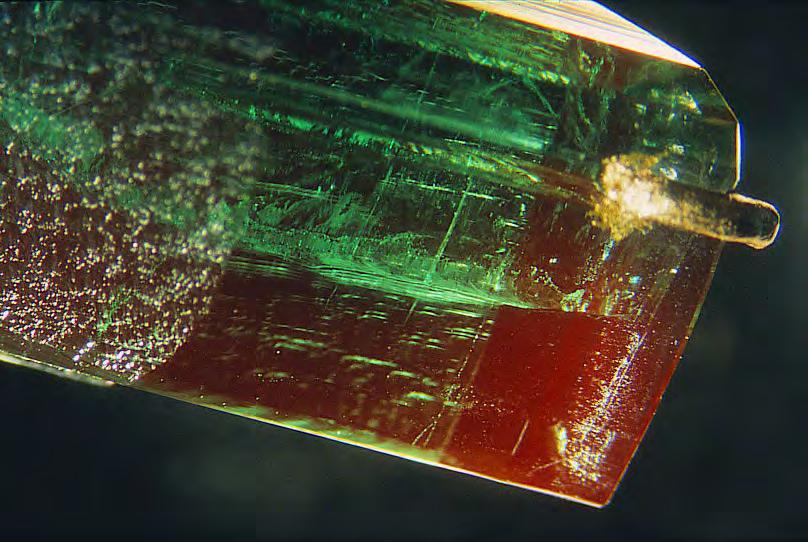


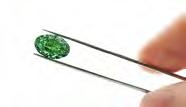
Photo: H.A. Hänni, SSEF
Emerald close to light source: not a colour change!

Colour change:
Change of main hue when holding the stone about 30 cm from the light source (standardised daylight and incandescent light).
See also LMHC information sheet No. 9; www.lmhc-gemmology.org


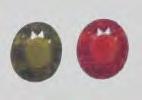

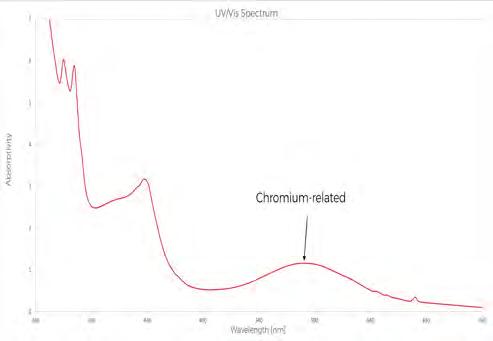
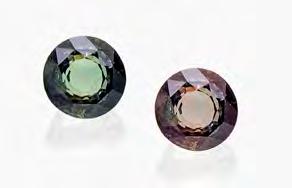
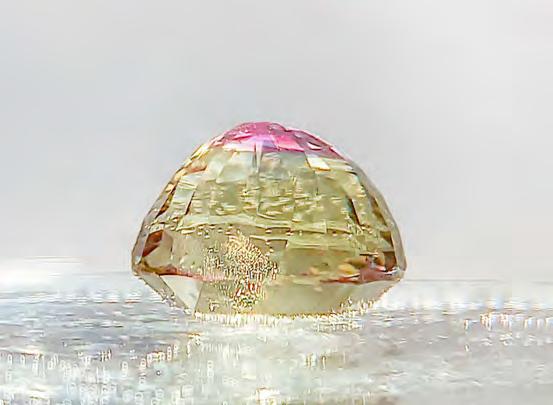
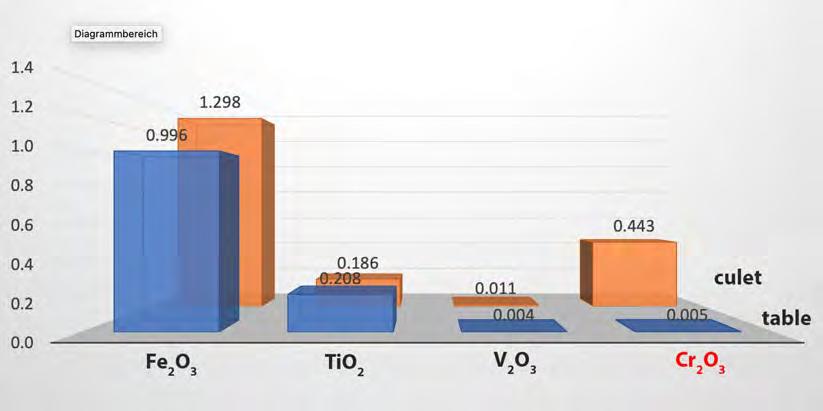
Chromium-rich zone at the culet (reddish) and chemical composition at table facet (blue bars) and culet (orange bars).
P. Lefèvre, SSEF

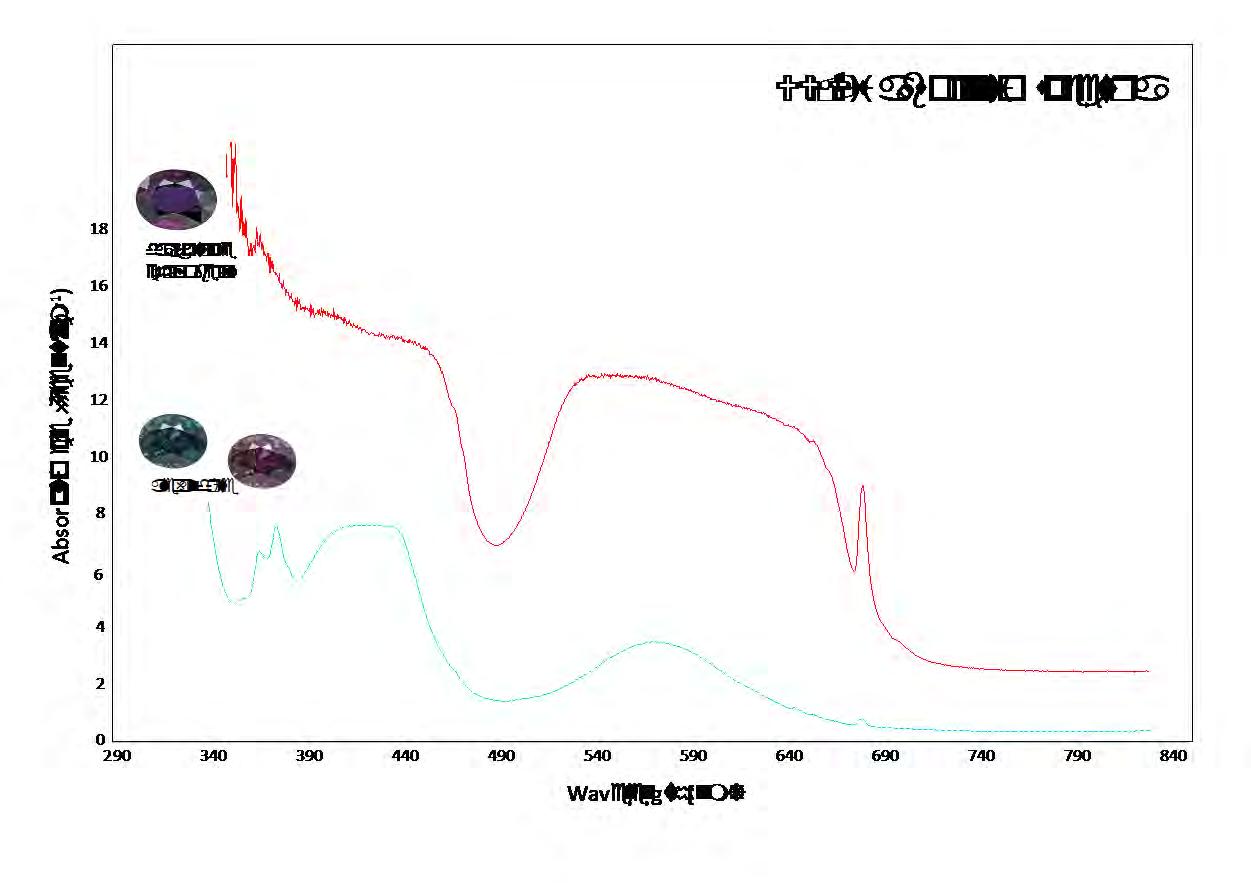


This chrysoberyl is only dark reddish purple.
Too much chromium (2.8 wt% Cr2O3) for colour change!
Chrysoberyl from Sri Lanka with equal vanadium and chromium concentration.
The main absorption band is shifted to 595 nm.
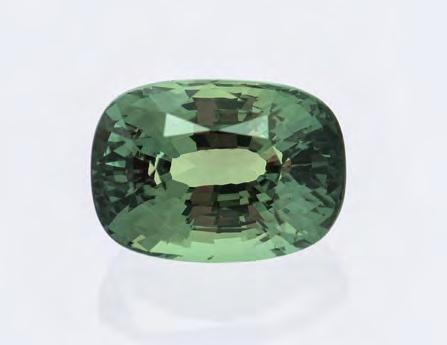

No colour change effect !
595 nm EDXRF:
Fe2O3 0.851 wt%
V2O30.058 wt%
Cr2O30.070 wt%
Schmetzer, Krzemnicki, Hainschwang & Bernhardt, 2013

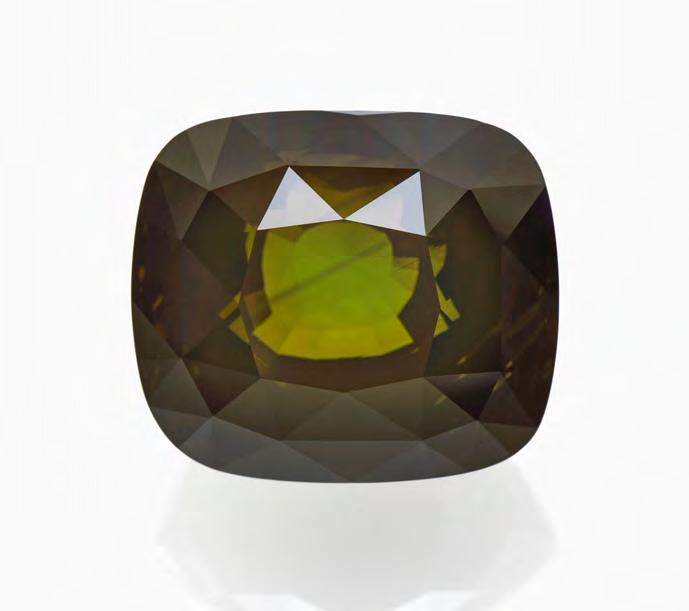
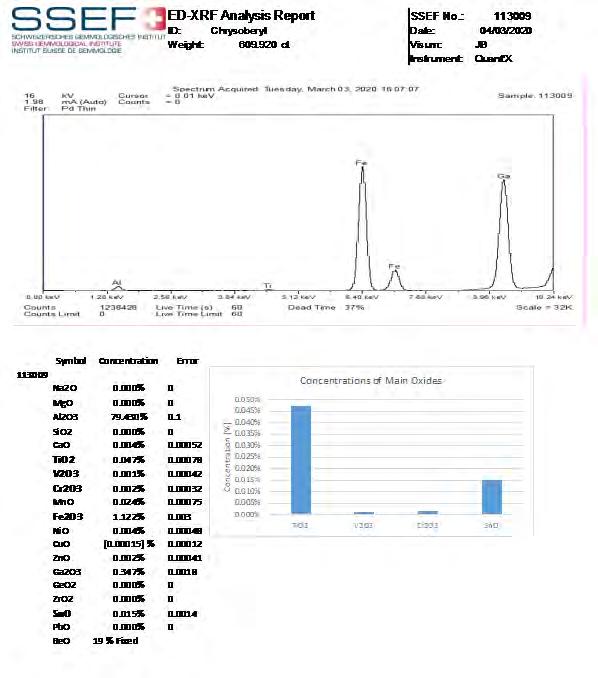
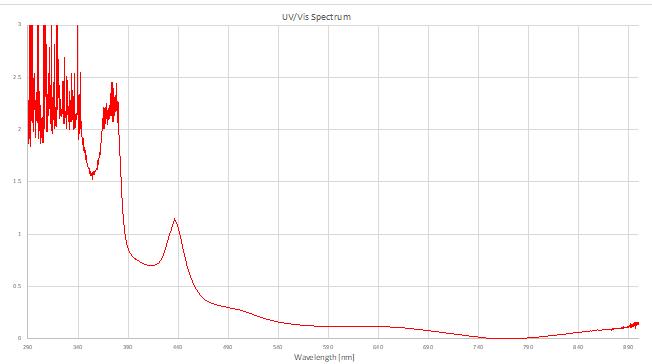
Impressive chrysoberyl of 609 ct from Sri Lanka. Only tiny traces of chromium (0.002 wt%) but much more iron.
Consequently shows no alexandrite effect and by definition cannot be called alexandrite !


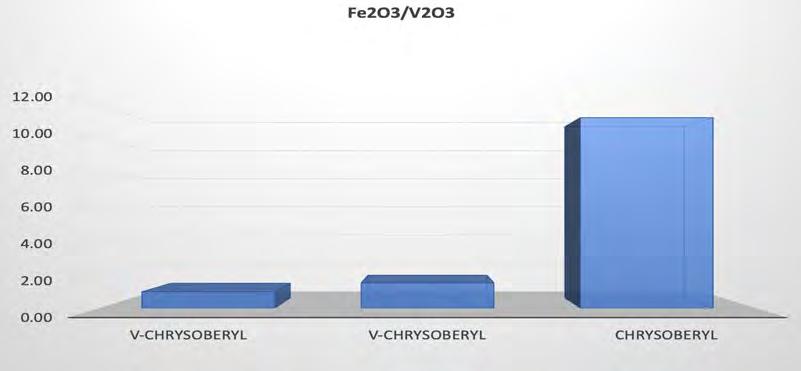

V-bearing chrysoberyl may show attractive bluish green colour but no colour change ! If iron is strongly dominating, then the colour shifts to olive green, thus similar to normal Fe-rich chrysoberyl.
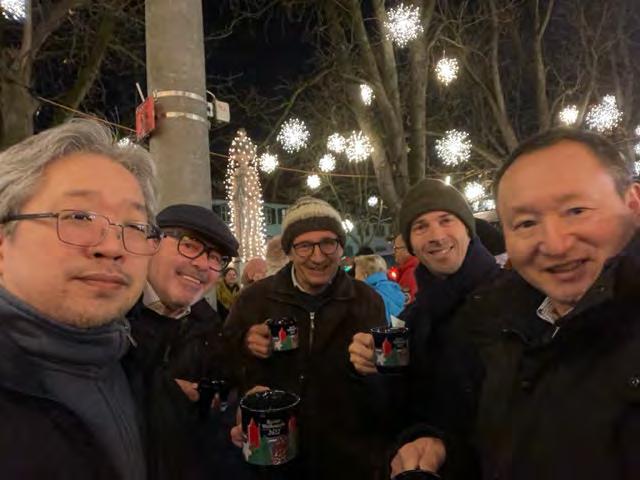
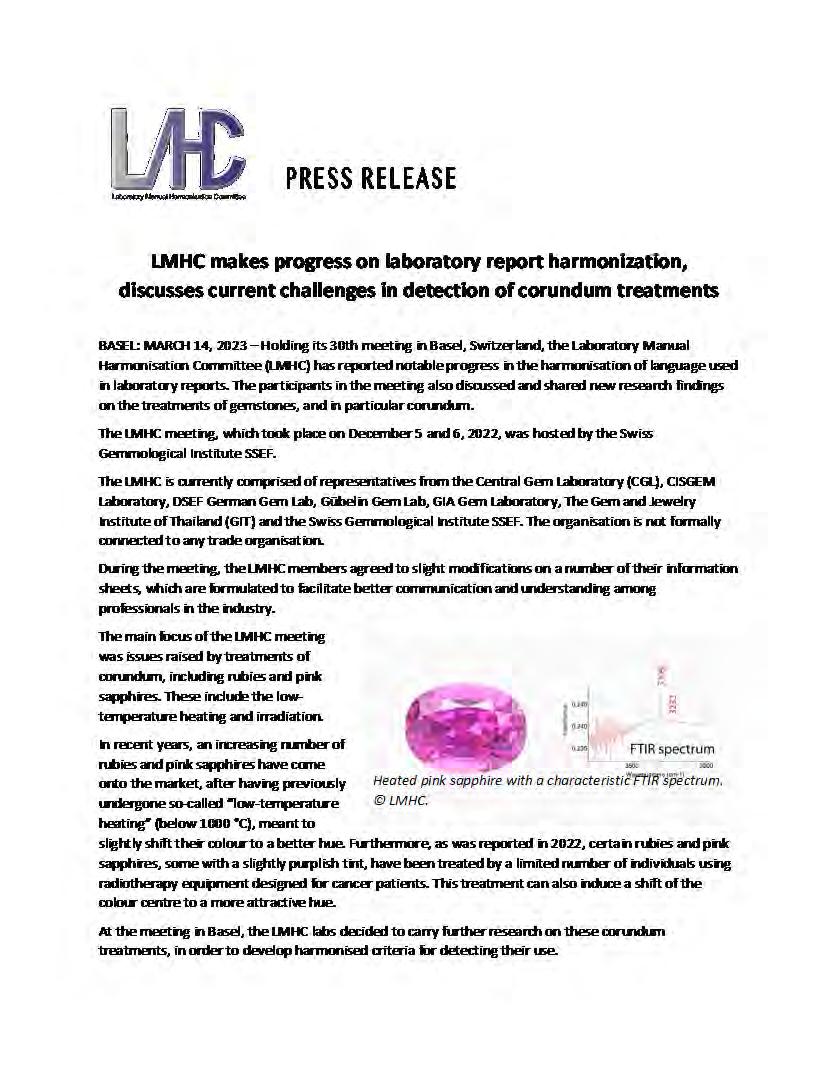
https://www.lmhc-gemmology.org/s/LMHC-Press-Release-30th-meeting-report-14-3-202318.pdf

Celebration marked by a symposium with key international speakers providing broad trade expertise and deep insights into mining, cutting, pearling, auctions, jewellery design and other themes.
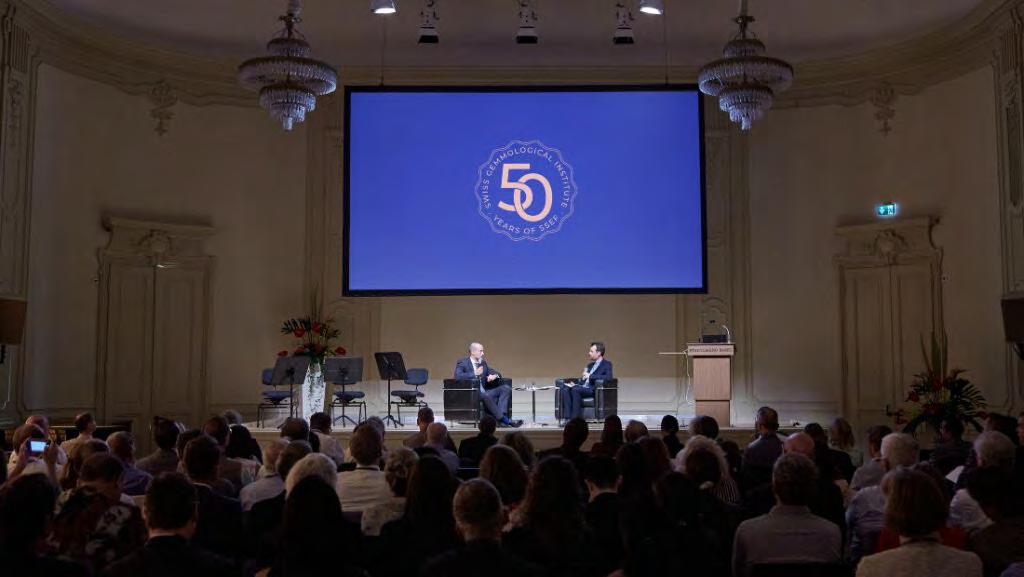
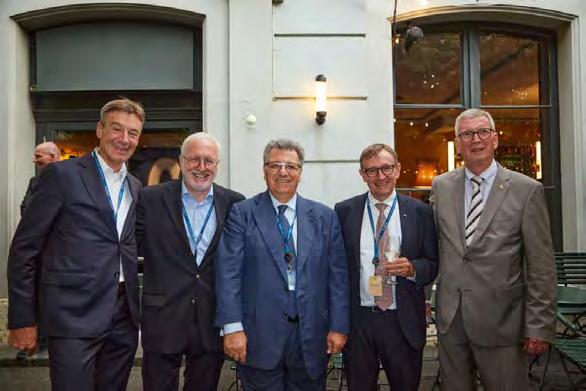
All talks and a selection of photos of the event:
https://www.ssef.ch/50years

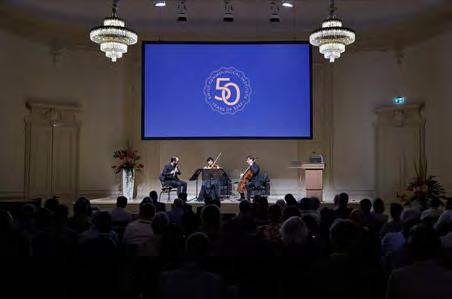

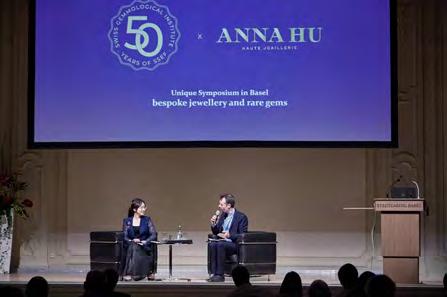


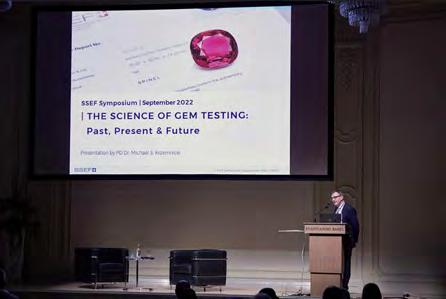

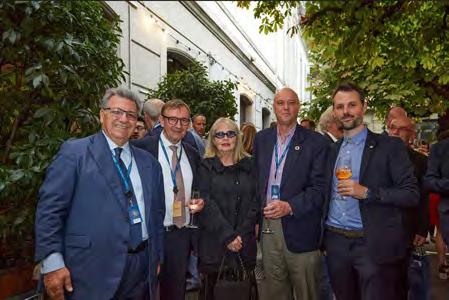


Book published to celebrate the 50 year of SSEF.
To obtain a copy, please contact us (admin@ssef.ch).


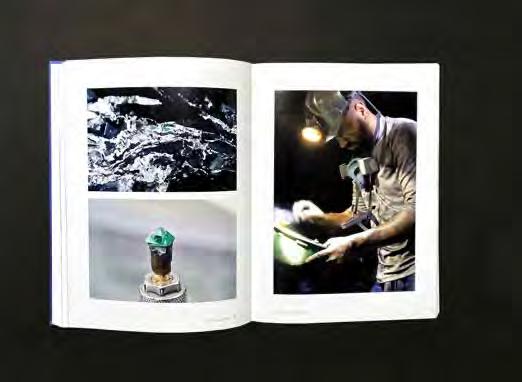
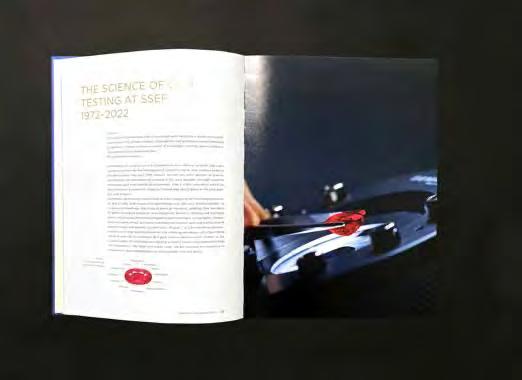
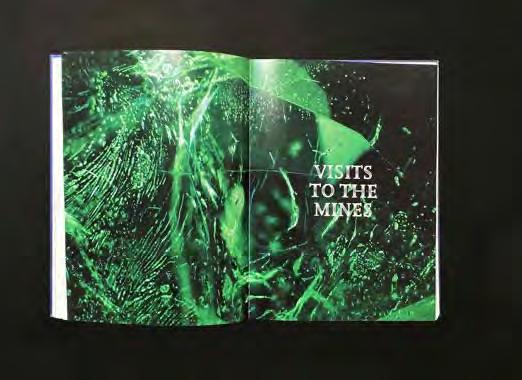
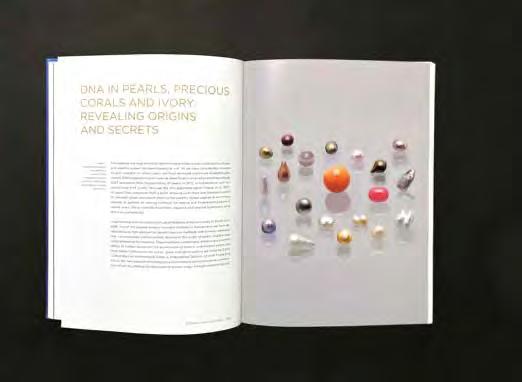

Get the newest issue at www.ssef.ch/ssef-facette
